





Berries • TIKI • awards • CHERRIES AND APRICOTS • MARKET MANIA FRESH SARDINES • REIMAGINING SAN BENITO COUNTY • TALBOTT VINEYARDS THE JEWISH FOOD FESTIVAL • THE PICNIC BASKET Celebrating the Local Food and Wine of Santa Cruz, Monterey and San Benito Counties edible Summer 2012 • Volume 1 • Number 4 Member of Edible Communities ®
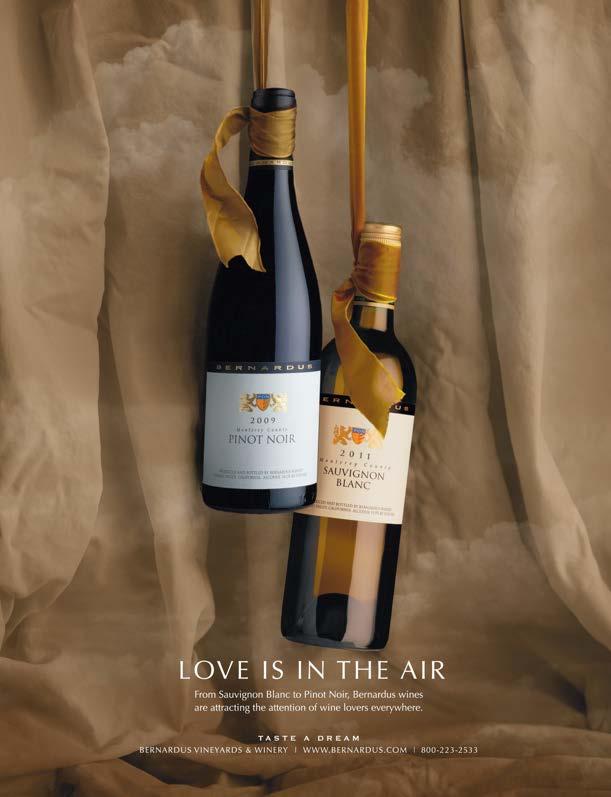

4 Grist for the Mill
7Edible Notables Picnic Basket • 2012 EDDY Awards • Local Heroes The Jewish Food Festival • Companion Bakeshop
16What’s in Season Summer Squash and Squash Blossoms Rediscovering one of summer’s most plentiful offerings
20Urban FoodShed Market Mania Reinventing the farmers’ market 24On the Farm Mixed blessing Living in the land of the “super fruit” 30Out to Sea Fresh Sardines Catch them while you can 36Edible Community Reimagining San Benito County A foodie frontier seeks its seat at the table
44On the vine Labor of Love Talbott Vineyards’ Robb Talbott and Dan Karlsen
49The Preservationist Cherries and Apricots Capturing summer’s arrival
52Edible Events Charlie Hong Kong and Lokal Edible Monterey Bay’s first two Pop-up Supper Clubs 59Monterey Bay Summer Farmers’ Markets 63Dine Local Guide 67Map of the Region/Local Source Guide
71Local Libations Ooga Mooga! The Tiki revival is in full tilt at Hula’s
Cover Photograph: Blueberries at Le Cigare Volant restaurant, by Ted Holladay
Contents Photograph: Olive trees in San Benito County, by Ted Holladay

2 edible monterey baySummer 2012
Contents Summer 2012
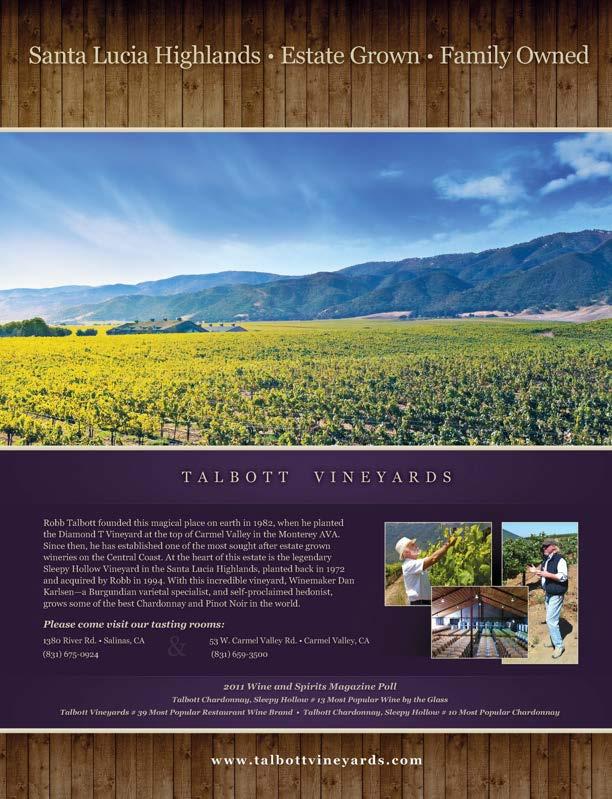
GRIST FOR THE MILL edible monterey
bay
PUBLISHER AND EDITOR
Sarah Wood
Sarah@ediblemontereybay.com 831.238.1217
CO-PUBLISHER AND ASSOCIATE EDITOR Rob Fisher
COPY EDITOR Doresa Banning DESIGNER Melissa Petersen
WEB DESIGNER Mary Ogle AD DESIGNER Jean Roth
The dirty little secret around our house is that, while it was a love of cooking that first prompted us to think about creating this food magazine, the fact is that ever since we launched it, we’ve well, um, stopped cooking. Not entirely, of course.
But we have to admit that as we race to keep up with what seems like a constant and continuous march of deadlines, our cooking has become pretty simple. Gone are the days when we could spend an afternoon wrangling several bunches of hardy Swiss chard into a plate of delicate malfatti. Gone are the days when we got out into the garden just to plant the chard. Gone are…
Whoops. We are incredibly fortunate. Summer is taking hold. We have beautiful heirloom tomato plants settling into that garden. And our simple dinners allow the rockstar essence of our Monterey Bay region’s fruits and vegetables to shine through and remind us why we are doing this.
We are inspired by the food, and the people who grow and prepare it. We are inspired to share their stories, and we are inspired share the bounty of our own garden.
Just please don’t expect malfatti anytime soon. Let us get past a few more issues before that.
Meantime, we offer you this magazine, which, in truth, we love producing, and we think you’ll love to read. In the pages that follow, you’ll learn about organic berries (p. 24), sardines from the Bay (p. 30), a huge array of new local food events like The Independent Marketplace (p. 20), luscious local wine (p. 44), preserves (p. 49) and even local Tiki drinks (p. 71).
It’s all here. Dig in. Enjoy. And look for more by going to our website, www.ediblemontereybay.com, following our Facebook, Twitter and RSS feeds, or by registering to share a meal (and most likely a new adventure) with other Edible readers at one of our Pop-up Breakfasts or Supper Clubs.
Now, back to the kitchen, er, computer…
With gratitude and best wishes for a wonderful summer, Sarah Wood and Rob Fisher Publishers

RECIPE: For our favorite malfatti recipe, please go to www.ediblemontereybay.com and click on the “RECIPES” tab.
CONTRIBUTORS FOR THIS ISSUE
Freda Banks • Jordan Champagne
Jamie Collins • Cameron Cox
Margaux Gibbons • Ted Holladay
Elizabeth Limbach • Deborah Luhrman
• Pete Rerig • Carole Topalian Patrick Tregenza • Amber Turpin
Patrice Ward • Lisa Crawford Watson
ADVERTISING SALES
Shelby Lambert • 831.238.7101
Shelby@ediblemontereybay.com Kate Robbins • 831.588.4577 Kate@ediblemontereybay.com
INTERN Katie Reeves
DISTRIBUTION ASSISTANCE
Angie D’Elia Lee • Iris McWilliams
CONTACT US:
Edible Monterey Bay 24C Virginia Way, Carmel Valley, CA 93924 www.ediblemontereybay.com 831.238.1217 info@ediblemontereybay.com
Edible Monterey Bay is published quarterly. All rights reserved. No part of this publication may be used without written permission of the publisher. Subscriptions are $28 per year at www.ediblemontereybay.com. Every effort is made to avoid errors, misspellings and omissions. If, however, an error comes to your attention, please accept our apologies and notify us. Thank you.
4 edible monterey baySummer 2012
Photo by Zoe Fisher

www.ediblemontereybay.com 5

6 edible monterey baySummer 2012
Edible Notables Down by the Boardwalk

The Picnic Basket offers a true taste of Santa Cruz
By Elizabeth Limbach
Co-creators:
The Santa Cruz Beach Boardwalk is the city’s most iconic tourist attraction—drawing three million visitors each year—and yet its dining options don’t exactly scream “Santa Cruz.”
Despite the bounty of fresh local and organic foods in the area, the amusement park is unsurprisingly lined with funnel cakes, corn dogs, cotton candy and an astounding array of deep-friend specialties. Luckily for those who like their roller coasters—but prefer to fuel up on something other than deep-fried Twinkies afterward— the Boardwalk area now boasts a restaurant that actually embodies the region’s culinary potential.
The year-old Picnic Basket is the second gastronomic venture from business partners Kendra Baker and Zachary Davis, who opened Santa Cruz’s Penny Ice Creamery in August 2010. Baker is a graduate of the Johnson & Wales University’s College of Culinary Arts in Rhode Island who got her start cooking for Santa Cruz’s celebrated Gabriella Café and has developed a reputation for being an extremely creative chef. Davis is a veteran of the Bay Area Internet startup scene and holds an MBA in sustainable enterprise from Dominican University of California in San Rafael. The two were friends for almost a decade before they opened the Penny, and launching The Picnic Basket has fulfilled a dream they’ve long shared.
“We’ve always been in love with the idea that we could personally know the people who grow and produce what we eat, and we wanted to see if that was still possible,” says Davis. “Now, knowing the people who bake the bread, raise the chickens, grow the fruits
and vegetables, brew the beer, and make the wine, we feel like we’ve made our vision come true.”
The café’s unique creations (such as the popular Ricotta Beet Panini) are assembled with ingredients like local organic produce from Route 1 Farms, Happy Boy Farms and Dirty Girl Produce, bread from Companion Bakeshop (most notable is the Picnic Loaf— a multi-grain sourdough loaf created especially for the restaurant) and meats from nearby sustainable operations like el Salchichero and Rib King. Foraged ingredients add to the distinct neighborhood menu, as do the libations and desserts, which include Verve coffee and Santa Cruz Mountain Brewery beers, and a rotation of nine ice cream flavors that are freshly made from local, seasonal and organic ingredients at the Penny.
The peak tourism months bring droves of out-of-towners to the Santa Cruz beachfront—and The Picnic Basket. But it’s also a favorite among locals—including its local artisanal suppliers.
“We definitely felt a degree of vulnerability starting a project that was so closely tied to our personal values,” says Davis, “so we feel tremendously grateful that folks appreciate what we are doing.”
Baker concurs: “It is pretty cool to see the pride and enthusiasm that our community has for what is happening here in Santa Cruz.”
Elizabeth Limbach is an award-winning journalist based in Santa Cruz.
The Picnic Basket
125 Beach St., Ste. B, Santa Cruz • 831.427.9946 www.thepicnicbasketsc.com

www.ediblemontereybay.com 7
Picnic Basket owners
Zach Davis and Kendra Baker.
Photos by Ted Holladay
The Picnic Basket’s Market Salad.
Edible Notables 2012 EDDY Awards
Jim Kasson’s tribute to Salinas Valley farm workers wins national prize
By Lisa Crawford Watson
It all started with a picture. A landscape, photographed through the window of a moving car. Some images were clear, others blurred, with directional distinction. Fascinated, Jim Kasson was determined to figure out how it was achieved.
For 18 months, Kasson stared at that photograph, the engineer in him piecing together a process that would have created the composition, while the artist appreciated the effects. In the end, he pulled out his 4x5 Linhof Technika camera and began making his own.
Kasson eventually applied the technique to create a series of photos of Salinas Valley farm workers, which he called This Green Growing Land. A collection of the striking photos appeared in the inaugural issue of Edible Monterey Bay in Fall 2011. In March, the photo essay received the top non-cover photography prize in the 2012 national “EDDY” Excellence in Publishing Awards made by Edible Communities, the family of magazines of which Edible Monterey Bay is a member. The award was one of 20 editorial prizes for which 70 Edible magazines were under consideration.
The farm worker photos are reminiscent in style of impressionist paintings, both in their soft, abstracted beauty and in their elevation of often overlooked and taken-for-granted subjects.
“The selective blurring and muted colors render the workers anonymous, making the images less a portrayal of a particular time and place, and more an archetype…but the emphasis is on the workers and their relationship to the land and to the machinery,” Kasson wrote in an artist’s statement for the series.
Kasson took the photographs from a moving car, exposing the negatives at slow shutter speeds and using panning to emphasize some parts of the scene and to blur others. He printed the images on heavy paper with a color palette similar to that of pastels.
The Stanford-educated electrical engineer, who spent most of his career with Hewlett-Packard, Rolm and IBM, began photographing in earnest for his high school yearbook and, later, The Stan-

ford Chaparral humor magazine. Later, in 1980, Kasson took a threemonth hiatus from work, built himself a dark room, bought a Hasselblad camera and got serious. Most of his earlier work was traditional, silver-based, black-and-white photography.
Today, Kasson relies on digital editing and printing processes, and he has moved away from using slow-motion photography techniques to create the blurred images he is after. Recently, he’s been compiling a body of work in a new, “staccato” style.
“I decided to come up with a different way of doing this,” Kasson says. “I learned how by inventing it. Each picture is a composite of some eight to 20 photographs taken within seconds of one another. I determine what is sharp and what is blurred by the way I line up the pictures when I overlay them.”
“I like to experiment,” Kasson explains. “My photography is all about coming up with an idea and not knowing how it will turn out, but playing with it until I do know. It is a lot like engineering — both technical and creative. In engineering, elegance is also important, an idea I value in photography as well.”
To view Kasson’s work, go to www.kasson.com; to see the winning photo essay, go to www.ediblecommunities.com/montereybay/online-magazine/fall-2011/in-the-fields.htm.
Editor’s note: In addition to receiving the EDDY award for Kasson’s photo essay, Edible Monterey Bay was one of three finalists for EDDY Awards for Excellence in Publishing in the category of “Best Editorial— Beverage-Focused,” for “On the Vine, Grahm’s Gamble,” by Kurt Foeller (Edible Boston took home the prize) and “Best Editorial—New Column Creation” for “The Preservationist,” by Jordan Champagne of Happy Girl Kitchen Co. (Edible Manhattan won the honor). We congratulate our talented contributors and fellow publishers for this welldeserved recognition!
8 edible monterey baySummer 2012
Equipped: Kasson and his 4x5 Linhof Technika.
Photo by Rob Fisher

Edible Notables
EDIBLE MONTEREY BAY ANNOUNCES 2012 LOCAL HEROES WINNERS
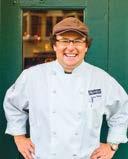

Chefs, nonprofits and farmers are among our readers’ choices
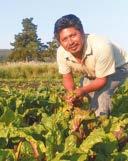 By Renee Brincks
By Renee Brincks
The votes are in, and Edible Monterey Bay congratulates the winners of our inaugural Local Heroes Awards, which were selected by readers through an online poll on our website!
“It means a tremendous amount to be honored in this way,” says Monterey Chef Tony Baker, who snapped up Best Chef/Restaurant, Best Food Artisan and Best Food Retailer awards for his work with Montrio Bistro and Baker’s Bacon. “It makes you feel that your work is worth it and that people are paying attention.” During 15 years at Montrio, Baker has been serving fresh, made-from-scratch dishes crafted with seasonal, organic produce, responsibly raised meats and sustainable seafood. Baker’s Bacon, which he launched last August to create an alternative to overly processed mass-market brands, follows similar principles. Thick cuts of meat are hand-seasoned with salt, sugar and spices, dry cured and slowly smoked over apple wood.
“Real food is my goal. It’s bringing us back to what food should be, which is minimally processed and, ideally, regional and local,” he says. “If you start with great ingredients, you don’t have to do a lot to them.”
The Local Heroes Awards are something that Edible magazines all across the U.S. and Canada have been conducting for several years, as a way to recognize local food producers and purveyors for their exceptional contributions to their communities.
While Baker swept three categories, three organizations split Best Nonprofit honors: GMO-Free Santa Cruz, MEarth at Hilton Bialek Habitat and Everyone’s Harvest.
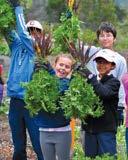
GMO-Free Santa Cruz, led by Tarah Locke and Mary Graydon-Fontana, is garnering local support for a proposed California ballot initiative to require the labeling of genetically modified foods
(GMOs). Currently, no such labeling is required, so there is no way for consumers to know if foods contain GMO ingredients unless sellers disclose it voluntarily. Since July, 120 volunteers have been trained to collect signatures.
“It’s like the whole movement toward eating locally and organically,” says Locke. “We’re pushing toward that kind of awareness.”
Encouraging awareness is also a goal of co-awardee MEarth, the environmental education nonprofit situated on the campus of Carmel Middle School. There, a small staff offers creative science and sustainability programs primarily aimed at students. In addition to an organic garden and native plant nursery, there’s a new green building with a living roof, solar panels, a rainwater catchment system and kitchen facilities that bring lessons to life.
“Our mission is to inspire students of all ages to understand, appreciate and protect the natural environment,” says MEarth Executive Director Andrea Lewis. “To have the work that we do validated through an award of this type is exceptionally gratifying.”
The Best Nonprofit recognition motivates Iris Peppard of Everyone’s Harvest to continue creating robust community outreach programs. Since launching the Marina Certified Farmers’ Market 10 years ago, her group has added others in Pacific Grove and Salinas. In 2010, Everyone’s Harvest introduced free farmers’ market cooking workshops as part of its Edible Education for
Youth program. Chefs teach participants tasty new ways to enjoy produce sold right on site. (For more, see “Market Mania,” p. 20.)
“A lot of our farmers come from this area,” Peppard says. “We support them, and they support us.”
10 edible monterey baySummer 2012
Healthy
Photos courtesy of winners and Edible Monterey Bay.
Our heroes, from left: Jose Nunez, Tu Universal Organics/Everyone’s Harvest; GMO-Free SC’s Tarah Locke and Mary Graydon-Fontana; MEarth students; Montrio’s Tony Baker; Pinnacle Organics’ Phil Foster and Serendipity Farms’ Jamie Collins.
This year’s Best Farm/Farmer award goes to two popular local producers. Phil and Katherine Foster farm 250 acres in San Benito County, prioritizing fair wages and environmentally friendly growing practices. Their Pinnacle Organically Grown Produce sells at regional farmers’ markets and at their San Juan Bautista farm stand and Whole Foods. (For more about Foster and Pinnacle, please see “Reimagining San Benito County,” on p. 36.)
Co-honoree Jamie Collins started Serendipity Farms 11 years ago and currently sells her organic vegetables through a local community-supported agriculture (CSA) business and at Bay Area farmers’ markets. She specializes in nutrient-rich pea shoots, dandelion greens, kale and chard and plans to market fruit grown on her Aromas ranch in the coming years.
Over the past decade, Collins has watched enthusiasm for local foods flourish.
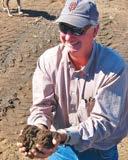
“Monterey County is just starting to hit its stride,” she says. “The momentum is there now, and it’s great to be a part of it.”
If you missed your chance to vote in this year’s Local Heroes Awards, please watch for more about the next vote, which will take place this fall, by following us on Facebook and Twitter. The magazine has some special plans for the 2013 Local Heroes Awards to announce!
Renee Brincks is a full-time freelance writer who covers food, travel and lifestyle topics.
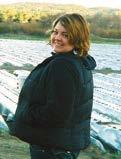
For more information on the winners, go to: www.bakersbacon.com, www.everyonesharvest.com, www.labelgmos.org/gmofreesc, www.meearth.info, www.serendipityorganics.org and www.pinnacleorganic.com.

www.ediblemontereybay.com 11
At the end of June, members of Congregation Beth Israel and their friends meet in the Carmel temple’s kitchen to begin baking bread and pastries from traditional recipes that will serve nearly 4,000 people.
The kitchen becomes an orchestration of activity, its rhythm kept by the clanging of pots and pans, while the melody dances on the voices of women sharing family stories, remembering the bubbies who “did it this way” and the memories of holidays and festivals gone by. As hands stir the pot, work the dough, form the crust, the spirit enters what is fondly called, “Jewish food for your soul.”
“I am a from-scratch person,” says Diana Rosenthal, who leads the baking. “I like getting my hands in it; the process of kneading the dough is an experiential thing. To be a good baker, you have to have your hands on product. I remember, my husband’s grandmother, the family’s best pie crust maker, used her eyes and sense of touch to tell things were just right.”
And so begins preparation for the annual Jewish Food Festival, the largest such celebration of Jewish food and culture in the region.
The one-day event, held on the fourth Sunday of every August, will celebrate it’s 25th anniversary this Aug. 26, and, as it does every year, will seek to celebrate and share Jewish culture with the wider community. Thousands of food lovers of all faiths are expected to flock to Beth Israel for the recreation of a traditional Jewish village, complete with costumes, music, dance, wedding enactments—and food.
“Food is a central part of Jewish culture,” says Beth Israel Rabbi Bruce Greenbaum. “Whatever we do, food is a component of it. It has taken time for it to become ingrained in American culture, but now it is… Non-Jews and Jews alike tend to enjoy Jewish food. What’s not to like about chicken soup?”
“I think if you look at the different ethnic festivals, what they all have in common is food,” says Rosenthal. “It unites people. Food is essential for our existence, yet the sharing of food has become ritualistic; we’re not just standing under a tree grabbing fruit. There are rituals of preparation, serving and communal eating. Food
Edible Notables Feasting on Fellowship
The Jewish Food Festival celebrates 25 years of feeding the soul
By Lisa Crawford Watson
is something that bonds us, feeding the body and the soul at the same time. It strengthens family relationships and creates community.”
In a new twist, Beth Israel last year partnered with Monterey County Waste Management to “go green” by introducing compostable utensils, plates and napkins and by diverting waste from the landfill by capturing hundreds of plastic zip bags used for freezing food, for the “bag in bag” program.
“Rather than tossing all those zip bags,” says Donna Shore, “we rinsed them, and stuffed them in a larger plastic bag for recycling. This ‘greening’ is a new element in a well-oiled machine. Our efforts tie into Tikkun Olam, which is a Jewish value of repairing the earth, making it better than we found it. This calls us to take responsibility for our actions, to take care of the earth; it hurts our soul when we don’t. We felt good about this; we knew we had done a great job to minimize waste.”
What never goes to waste is the food.
Most people purchase their latkes or potato pancakes, challah bread, hamentashen and rugelach pastries, falafel, corned beef or pastrami sandwiches, chopped liver, matzoball soup and more to enjoy on site in the village, as they listen to music by performers including Alisa Fineman and Kimball Hurd.
Yet many also buy great quantities of food to take home for the evening meal or to be enjoyed during the days and weeks to come. At the end of the festival, any remaining food is donated to Dorothy’s Kitchen and other local shelters. Funds raised support educational programs in the synagogue, as well as the American Red Cross and MAZON Jewish food bank.
Like a Jewish Brigadoon, on this day in August, the sun rises and the fog clears, revealing a bustling village that will die with the day, slipping into obscurity with the setting sun, for another year. Yet behind the scenes, the culture continues, with food, faith and fellowship.
The 25th Annual Jewish Food Festival
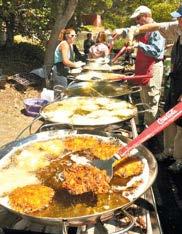

Congregation Beth Israel
5716 Carmel Valley Rd., Carmel Sunday, Aug. 26, 10:30am–4pm 831.624.2015 • www.carmelbethisrael.org
12 edible monterey baySummer 2012
Photos by Patrice Ward
Open-air deli: Lester Tockerman and an array of food offerings

Edible Notables
Eat, Bake, Commune

Breaking bread with Companion Bakeshop’s Erin and Jeremy Lampel

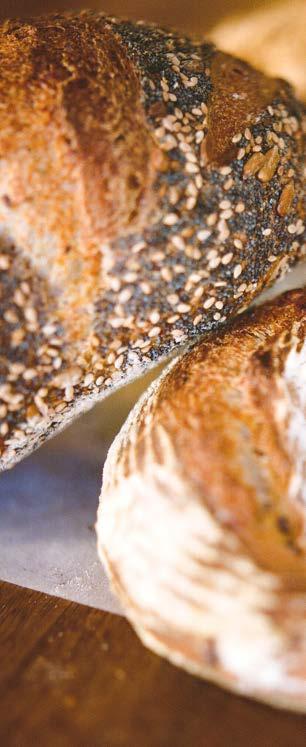 By Cameron Cox
By Cameron Cox
Gone are the days of the one-track mercantile. Garden nurseries serve single-drip coffee and small-batch ice cream…oh, and vintage shoes. Barber shops and antique stores double as wine bars at night and the next day offer quiches, host pop-up dinners, book signings and DIY terrarium workshops. Heck, even Safeway’s consolidated: get your groceries, find those flowers for Nana and grab a Starbucks before picking up your antibiotics and money order on the way out. The butcher is the baker is the candlestick maker.
Are we that pressed for time?

Maybe so. Or maybe we’re just connecting the dots; hybridizing our interests to see what may come of it and who will show up. It’s a quirky experiment, often fun but sometimes a little forced.


Not at Companion Bakeshop in Santa Cruz. They’ve dialed in the multi-use retail model—and it’s working just fine.

Owner-husband-and-wife team Erin Justus Lampel and Jeremy Lampel opened their doors last year with the very intention of serving the community with much more than just bread, pastries and coffee.
The two met in 2007 over avocados and bread at the Santa Cruz farmers’ market. Jeremy sold the green, warty fruit and Erin, her breads, which she began baking in 2004 while she completed the prestigious UC Santa Cruz Apprenticeship in Ecological Agriculture. Soon her baked goods were found in local farm CSA boxes and eventually, at farmers’ markets. In a big push, Nesh Dhillon, manager of the Santa Cruz Community Farmers’ Markets, helped the Lampels find a commercial kitchen space where they could begin pursuing their vision of a dynamic, food and community-oriented business.

“In this day and age, you can’t have a standard business model where it’s singular and do the things that people have done for years,” says Jeremy.
Indeed, Companion Bakeshop holds baking and parenting workshops (entitled “It’s Alright to Cry”), serves as a CSA pickup (Live Earth Farm, Freewheelin’ Farm, H & H Fresh Fish Co. and Fogline Farm) and hosts live music. On Tuesday evenings, its Community Pizza Night comes to life, when close friend and devout pizza maker Roland Konicke spins dough and local produce into tasty pies (we can say that because he hails from New York) for the masses at the restaurant’s long communal table.
Walking into the bakeshop, you can feel things are more interactive than at your usual café. There are no heads buried in laptops
14 edible monterey baySummer 2012
Photos by Freda Banks
Jeremy and Erin Lampel.
or ears glued to cellphones, no quiet mumbling over keyboard chatter, no nests of computer cables. People make eye contact, smile, converse, eat together. The definition of its name says it all: Com•pan•ion: “a comrade.” Its Latin roots imply “sharing bread with others.”
The space was even built entirely by their community of friends, family and neighbors.

OK, got it. This is a people-based business.
“Our community plays a huge role in making decisions,” says Erin. “Ultimately we are here for the community, and our goal is to see happy people. We want them to be inspired by what we do and of course enjoy it with their friends and family. When we think of making changes, we always think community first.”
This comes through in their product. Everything feels cared for and packed with flavor, attention to detail and a ton of heart. Sourdough croissants (the starter is from Santa Cruz, naturally), cinnamon-apricot bread, buttermilk scones, an assortment of wheat-free options are just a few of Companion’s offerings. Flour is sourced from nearby Pie Ranch in Pescadero (ground by hand in their German mill). Produce comes from local farms and meats from el Salchichero, just across the way. The espresso is from Santa Cruz’s Lulu’s Coffee, whose owner, Manthri Srinath, provided barista training and even helped them out behind the counter on Companion’s opening day.
This is the difference between hand-made and mass-produced.
“We really wanted to keep things on a smaller scale and make sure we knew what we were doing at all times and touch every loaf of bread as it comes out and see that the quality stays there,” explains Erin.
The quality is there. If you’re able to make the trip to Companion Bakeshop, you will most likely learn something new, expand your community and eat great food.
Strangers are most welcome. And you are, too.
Cameron Cox is a general food enthusiast and divides her time between making and eating soup, chasing down the next best hot sauce and pretending cheese consumption is a viable substitute for cardiovascular activity.
RECIPE: For Erin Lampel’s recipe for Strawberry-Rhubarb Pie, go the “RECIPES” tab on our website, www.ediblemontereybay.com.
www.ediblemontereybay.com 15
What’s in Season
Summer Squash & Squash Blossoms
Rediscovering one of summer’s most plentiful offerings
By Jamie Collins Photography by Carole Topalian
The much-loved, nutritious and economical summer squash makes a debut at local Central Coast farmers’ markets in June and is available through October. It’s also easy to grow yourself and is an extremely versatile ingredient to include in your summer cooking repertoire.
Squash resides in the cucurbit family, shared by vining fruits such as melons, cucumbers, pumpkins and gourds, and was one of the first cultivated plants in the Americas. Long before resembling the flavor and shape commonly found on market tables today, squash was a bitter fruit with a tough skin and very little edible flesh. Eventually, it was developed into the succulent summer mainstay it is today; zucchini, for example, was first developed in Italy and brought to California in the 1920s by Italian immigrants before being grown commercially.
Botanically a fruit, summer squash is the swollen ovary of the female zucchini flower. But since it is most often used in savory dishes, squash is typically considered a vegetable. Squash plants have both male and female flowers. The female squash flower grows the fruit and is the large variety you see attached to the end of baby squash. Male flowers are smaller and can be found on the plant’s stem, where they merely provide pollen for passing bees to use to fertilize the females. The males are typically harvested for cooking, as they don’t produce squash themselves, but if you are hoping to harvest squash at a later date, be sure to leave a few male flowers on each plant for pollination purposes.
If you plant your own squash, wait to harvest the blossoms on the same day that you plan to prepare and eat them, as they are delicate and will wither quickly. They should be picked in the middle of the day, when they are open. The pistils and stamens—the female and male flower parts, respectively—are typically removed before cooking.
For best flavor and texture, the squash themselves should also be harvested right before cooking. If you need to store them, keep them refrigerated between 32° and 50° and try to eat them within three days.
Cooking Summer Squash
My favorite summer appetizer is roasted baby zucchini, with the flower still attached: Simply mix some soft goat cheese with fresh seasonal herbs like basil, thyme and parsley, slivers of sun-dried tomatoes and sea salt. Carefully stuff each blossom with this mixture, and
gently fold up the ends. Gently roll the baby squash in olive oil (while avoiding getting olive oil on the blossoms). Place in a shallow pan and bake at 350° F for five minutes.
The delicate flavor of the squash blossoms can also be enjoyed many other ways. In Mexican cooking, for example, “Flor de Calabaza,” as the flowers are known, are tucked into quesadillas or simmered in soup with other vegetables such as corn, carrots and poblano chiles in a chicken stock or tomato cream broth.
As the zucchini squash grows, the flower eventually falls off. The smaller the squash, the more tender it is. If overlooked, summer squash can grow to great lengths, but not to fret—a giant squash can be grated and used for baking breads, or the flesh can be scooped out and mixed with herbs, cheese and bread crumbs and placed back inside the hollowed squash and baked. The result is a delicious zucchini boat that will feed a large number of people.
Summer squash provides endless options for the creative cook. Consider shredding squash for a tasty and nutritious addition to your pancake batter, along with sautéed chopped onions and herbs, or slicing it thinly with a mandolin and tossing with herb vinaigrette for an elegant, simple salad.
The favorite standby, grilled zucchini, is best prepared by slicing thinly and marinating in balsamic vinegar and olive oil; try adding some apple wood-smoked sea salt prior to grilling. Sautéing is perhaps the easiest way to prepare it, and the dish can be sublime when made with good butter or olive oil and fresh herbs. For something more substantial, yet still vitamin-packed, toss the sautéed zuchinni with shaved Parmigiano-Reggiano and hot pasta.
Do you know your heirloom squashes?
Summer squash is not limited to green zucchini but many other shapes, sizes and colors from dark green to light green to yellow and some that have both colors on the same squash. Most have similar flavor but slightly different texture. What follows are some of my favorite varieties.
Costata Romanesco – A large, elongated Italian heirloom variety with two beautiful tones of green and ribbed skin. The flavor
16 edible monterey baySummer 2012
continued on p. 16
LOCAL FOODS IN SEASON

June, July And August
Fruit: *Apples • **** Apricots • Avocados • Blackberries • ****Blueberries • *Boysenberries • **Cherries • Figs • ***Grapes • ***Melons • Nectarines • Olallieberries • Oranges • Peaches • ***Pears • Plums • Raspberries • Strawberries
Vegetables: **Artichokes • Arugula • **Asparagus • Basil • Beets • Bok Choy • Broccoli • Carrots • Cauliflower • Celery • Chard Collards • Corn • Cucumbers • Eggplant Garlic • Kale • Leeks • Lettuces • Mushrooms • Onions • Peas • ***Peppers, Bell Potatoes • Radishes • Spinach • Summer Squash • Tomatoes
*comes into season in June **ends in June ***comes into season in July ****comes into season in August *****goes out of season in July (No notation means the crop is available all throughout June, July and August)

Fish: Abalone (farmed) • Albacore Tuna (troll/pole) • California Halibut (hook-andline) • Chinook Salmon (purse seine or troll) • Dungeness Crab • Lingcod • Market Squid • Pacific Sardines • Sablefish (aka Black Cod—hook-and-line and jig) • Rock Cod (aka Snapper, Rockfish—hook-andline and jig) • Sole (Dover, Petrale) • Spot Prawns • White Seabass (hook-and-line)
Sources: CAFF, Gizdich Ranch, Local Catch Monterey Bay, Passionfish Restaurant, Serendipity Farms.
Note: Only seafood that is considered sustainable by Seafood Watch is included here.
www.ediblemontereybay.com 17
of this variety is nutty, and the texture holds up well to grilling. This squash yields only about half of what a hybrid one would, but with such star flavor, this variety is well worth it. Just be sure to plant extra. The added benefit: since this one is an heirloom, the seed can be saved for next year’s garden.
Green Tint Pattypan / Scallop Squash – A UFO-shaped mini squash best suited for being sauteed or tossed into soups due to the high water content and delicious sweet and mild flavor. Also available in yellow and dark green, but the light green pattypans are more buttery in flavor.
Yellow Crookneck – A light yellow variety with a soft skin that bruises easily but also the most tender of all summer squash and the best marinated and cooked al dente or stir fried. I love them on sandwiches and will cook and keep them in the refrigerator continuing to marinate for for as long as a week, adding them to everything.
Eight Ball – A dark green, round variety with a flavor and texture of green zucchini. This squash is all about the novelty of the shape, which is conducive to being hollowed out and stuffed with grains such as wild rice or quinoa, ground meat and chopped vegetables. Finish by topping with your favorite cheese and baking until tender.
Growing Squash
On the Central Coast, squash seeds can be directly seeded into fertile ground as late as the end of July. To produce a steady supply, you’ll want to plant a fresh crop every three weeks. Keep the planting bed moist until seedlings emerge, and then thin to allow about two feet between plants and water as needed. Once plants start to flower, water at the
soil level and be sure to avoid getting the plants wet. Otherwise, you’ll risk fungal problems and damage to the squash blossoms—an important factor if you intend to use them in the kitchen.
Squash take about 50 days to reach maturity from seed and are wonderful for small gardens because just one plant will flower and fruit for several months, providing many pounds of nutritious produce.
They’re good for you, too
If all of this hasn’t made you appreciate summer squash all the more, knowing how nutritious it is just might. It is a super source of manganese, which helps facilitate protein, metabolize carbohydrates and activate enzymes, which helps most nutrients to be absorbed into the body. It is also high in folate and vitamin C—both excellent antioxidants that are beneficial to the heart. With zero fat and low in calories, squash should be a regular part of summer meals.
Jamie Collins of Serendipity Farms has been farming organic row crops at the mouth of Carmel Valley for more than 10 years and sells via a Community Supported Agriculture program, U-Picks, and farmers’ markets.
RECIPE: For a recipe for Roasted Squash with Seafood Saffron Risotto from the Fish Hopper’s Mo Tabib, please go to the “RECIPES” tab at www.ediblemontereybay.com.

18 edible monterey baySummer 2012

www.ediblemontereybay.com 19


20 edible monterey baySummer 2012
Clockwise from upper right: Indy mastermind Patrick Orosco with Sand City sculptor Taylor Hawthorne, Happy Girl Kitchen’s Jordan Champagne and her pickles, Lonely Mountain Farm’s Kenny Baker with customers and Chris Pester serving up Farmhouse Culture’s kraut.
Urban Foodshed Market Mania
Reinventing the farmers’ market
By Sarah Wood Photography by Margaux Gibbons
The local food calendar always explodes with activity in summer, but this year is different. As this issue of Edible Monterey Bay went to press, an astounding number of new developments in the farmers’ market scene were popping up across our area.
Sand City’s much-anticipated Independent Marketplace had just taken the region by storm, attracting more than 1,000 people to the debut of its joyous and community-driven hybrid of a farmers’ market, artisanal food festival, art exhibition, wine tasting—and just plain party.

Plans were also under way for new artisanal food and farmers’ markets in Santa Cruz and Carmel-by-the-Sea, Everyone’s Harvest was working on a small market for the CSUMB campus and two others had just opened—one in Capitola and one in Watsonville. (See our summer market directory on p. 57.)
The next new local food event slated to launch this year is the Santa Cruz Community Farmers’ Markets’ Foodshed Project, a festival-spirited, monthly first-Wednesday event that is being directed by Nicki Zahm. The project’s first installment, June’s “Strawberry Bonanza,” will feature an educational “Hay Bale Forum” provided by Swanton Berry Farm and a strawberry hunt conducted by Food What?!, the youth empowerment program. Companion Bakeshop will hold cooking demos. The July “Livestock Lowdown” will feature a barbeque of pastured meat, and collaborators are expected to include el Salchichero, Fogline Farm and Food What?!. August will focus on stone fruit and September, tomatoes.

www.ediblemontereybay.com 21
Funded by the USDA through a grant given jointly to the more than 20-year-old SCCFM and EcoFarm, the intent is to help consumers “think more about the food they buy and where they buy it,” says Market Manager Nesh Dhillon. “This whole grant thing has been a blessing because it has allowed us to dip our toes into the world of education.”
Meanwhile, Carmel-by-the-Sea, which had kicked the idea of a farmers’ market around for at least three years, is expected to finally get its market this summer or fall, as new mayor Jason Burnett, at his very first council meeting in May, created an ad hoc committee to make recommendations for a regular downtown event.

For his committee, Burnett has lined up high-profile local foodies including Eric Schlosser, the author of Fast Food Nation and known to many for his role in the documentary Food, Inc., and David Fink, one of the founders of the Masters of Food and Wine event and CEO of the Mirabel Hotel and Restaurant Group, which manages such Carmel restaurants as Aubergine, Cantinetta Luca and 400°.
“The hope is that we create a weekly, seasonal farmers’ market that is very nicely laid out and would morph into an outdoor dining venue,” Fink says, suggesting that one of Carmel’s restaurant-dotted side streets could shut down to vehicle traffic for an afternoon market each week, and then remain closed for the evening, evoking San Francisco’s Maiden Lane pedestrian mall, and encouraging shoppers to linger, mingle over a glass of wine and have dinner at a local restaurant.
Mayor Burnett, who grows his own organic vegetables in his rooftop garden, is clearly excited about the prospects. “I hope that this will be good for business, that this will be something that residents really enjoy and that it will be something that gives people a reason to come to town,” he says.
Also planned for this summer is a permanent indoor market in downtown Santa Cruz that Gabriella Café owner Paul Cocking hopes to open in July. So far, the location is being kept a secret. As we reported in our Spring issue, Cocking is taking San Francisco’s Ferry Plaza Farmers’ Market as his inspiration. The market will be open daily and will include a mix of farmers and food artisans. Brad Briske, one of Gabriella’s talented chefs, is expected to run one of the anchor businesses, a café with an attached salumeria and crudo bar.
Sand City’s Independent Marketplace (Indy for short) is also an indoor market, and has an atmosphere all its own. It runs from 4–9pm and is located in the airy, light-filled warehouse-like first floor of a mixed-use building called The Independent, which serves as a base for owner Patrick Orosco’s efforts to nurture Sand City’s growing artist and food communities.
Each month, the market explores a theme with participating local organic farmers, artists, chefs and food artisans—like jam and cheese makers—and plans are in the works for a speaker series. Wine and beer tastings were part of the first market, which had a Big Sur motif and benefited the Henry Miller Library. The second installment’s theme was Cinco de Mayo, and the beneficiary was Salinas’ Agricultural and Land-Based Training Association. Tequila tastings and Mexican food helped create a celebratory atmosphere.
Some of the Indy’s special amenities include a “veggie valet” where, after shopping, people can park bags filled with heavy pro-

22 edible monterey baySummer 2012
Photo by Ted Holladay
The Santa Cruz Community Farmers’ Markets’ Nicki Zahm and Nesh Dhillon.
duce and artisanal pantry items, and a “kids area” where parents can take small children to play.
“We’re taking the model of the farmers’ market and making it a lot more fun and comfortable for singles and for families,” says Todd Champagne, the Indy’s manager.
Champagne, who lived and worked on local farms for several years before starting Pacific Grove’s organic-certified Happy Girl Kitchen Co., which preserves local produce and teaches preserving techniques, says he was concerned, however, when he realized that an ice cream vendor, Santa Cruz’s creative, organic, small-batch Penny Ice Creamery, took in three times the revenues that the highest-grossing farmer pulled down at the May event.
“We may have to tell people there’s no having dessert until after they’ve supported our farmers,” Champagne says jokingly.
Difficult to enforce, yes, and not actually on the agenda, yes again. But in all seriousness, Champagne is hard at work on possible remedies, like awarding coupons for hot food discounts to customers who check bags full of fresh stuff with the veggie valet.

Everyone’s Harvest, which manages markets in Salinas, Marina and Pacific Grove, is also using incentives along with education to help promote the purchasing—and eating—of its fresh and nutritious offerings. The organization recently launched its free Healthy Interactive Cooking Workshops, and offers $10 worth of coupons to participants, redeemable in produce sold by its vendors. “We know that access [to healthy food] is necessary for people, but we’ve also realized that education is important to change people’s diets,” says Iris Peppard, executive director of Everyone’s Harvest.
Also expanding its education and outreach is the Monterey Bay Certified Farmers’ Markets, the more-than-three-decade-old group that operates out of Aptos, Monterey and Carmel. This Spring, MBCFM launched at its Aptos market its “Can you Dig It” gardening workshop series with the Monterey Bay Master Gardeners and its “Of Course I Can” cheese, sauerkraut and jam-making classes with Mountain Feed and Farm Supply. And with Mountain Feed now selling its homesteading supplies at the market, it can provide would-be canners with a one-stop shopping experience that includes classes, produce and canning equipment.
In some lines of business, new kids on the block can be viewed as competition. But in a happy twist, the net effect of all of these new venues and special programs may be a boost in traffic that all area farmers’ markets will be able to share, because some of the new events are producing novel solutions to the age-old problems of how to get consumers to grasp why shopping for fresh, local and seasonal produce is important—and how to make it convenient for them. And together, the new events are helping create more excitement about our region’s local produce and artisanal food products than has ever existed before.
For more information about all of these markets, see our Summer farmers’ market directory on p. 59 of this issue or under the “LOCAL FOOD GUIDES” tab on our website, www.ediblemontereybay.com.

www.ediblemontereybay.com 23
On the farm Mixed blessing
Living in the land of the “super fruit”
By Deborah Luhrman
All sorts of delicious edibles are grown in the Monterey Bay area, but our No. 1 crop in terms of sales and nutritional value is berries. Rows of strawberries, red raspberries, blackberries, olallieberries—and now blueberries—line the highways and back roads of the Central Coast, straddling Santa Cruz and Monterey Counties. Here coastal fog keeps the climate just right—not too hot and not too cold—allowing the summer sun to slowly ripen the fruit for maximum taste and healthfulness.
Berries pump hundreds of millions of dollars into the local economy and provide local residents with a plentiful and potent source of vitamin C and other antioxidants. Scientists and dieticians agree that disease-fighting polyphenols and flavonoids in berries have a very positive effect on human health. Researchers have found links between eating berries and reduced inflammation, reduced heart disease, lower blood pressure, weight loss, cancer suppression and, recently, a decreased risk of Parkinson’s disease. Growers promote berries as “super fruit,” “nature’s medicine cabinet” and “one of life’s few un-guilty pleasures.”
But all is not perfect in our berry paradise. The Environmental Working Group has identified strawberries as No. 3 on its Dirty Dozen list of most contaminated foods. Researchers found residues of 13 different pesticides on strawberry samples they tested. Raspberry samples contained residues of 51 pesticides, and blueberries also fared poorly in the analysis, coming in at No. 10 on the Dirty Dozen list.
“I wouldn’t eat a non-organic berry, not just because of food safety, but for the greater good of the environment,” says Steve Pedersen, who with his wife Jeanne owns the 40-acre High Ground Organics farm in Watsonville.
“A lot of these fields drain directly into the [Harkins] Slough, and putting a large amount of highly soluble chemical fertilizers on them would leach into the water, causing an algae bloom and causing fish to die off,” he explains.
Almost half of California’s strawberries and about 44% of the entire nation’s crop are grown in Monterey and Santa Cruz Counties. The most recent statistics show that in 2010, Monterey County grew 10,664 acres of strawberries worth $740 million, and Santa Cruz produced 3,317 acres of strawberries worth $197 million. Only about 5% of that acreage is grown organically.
So it is no surprise that our area was on the frontlines of the battle against the use of methyl iodide—a pesticide known to cause can-
cer and late-term miscarriages in farm workers and other residents of rural communities. It was touted as the next best strawberry fumigant, but both the Santa Cruz and Monterey County Boards of Supervisors, along with State Assembly Members Luis Alejo and Bill Monning, came out against the pesticide. Feeling the pressure, Tokyo-based manufacturer Arysta LifeScience Corp. withdrew its product from the U.S. market in March, before a single field was gassed.
Organic Roots
Berry production is highly labor-intensive work, and the welfare of farm workers in the strawberry fields has always been paramount to Jim Cochran, owner of Swanton Berry Farm in Davenport. In the 1970s he helped found the Cooperativa Campesina, a first attempt at assisting agricultural workers in Watsonville to start their own farms.
“I could talk to farm workers and I could talk to bankers, so I played a kind of broker role,” he recalls. Later with his own business, Cochran became the first organic farmer to sign a contract with the United Farmworkers Union. Today, workers participate in an employee stock ownership plan, making many of the farming and hiring decisions themselves.
Swanton Berry Farm was the first strawberry farm to be certified organic in California. Back in 1983, Cochran says he and a buddy each put up $10,000 to see if strawberries could be grown without pesticides, particularly methyl bromide, a widely used fumigant that depletes the ozone layer.
“Methyl bromide is kind of a magical thing,” he explains. “It kills everything to about 12 inches deep and then all the dead stuff turns into fertilizer that makes the strawberries grow enormous.”
Cochran and his friend rented a four-acre field and sprayed half the strawberries, leaving the other half unsprayed. Contrary to expectations, both fields thrived.
“Production was slightly lower on the unsprayed field, but they tasted better,” he says. “We got big, beautiful, premium strawberries that smelled great and tasted great.”
Cochran has been perfecting organic growing methods for strawberries and other berries ever since, at the same time expanding his business to 20 acres in five separate plots strung out along Highway 1 north of Santa Cruz.
24 edible monterey baySummer 2012


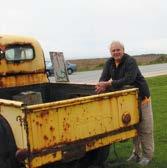







www.ediblemontereybay.com 25
Berry men: Top to bottom, Gizdich Ranch’s Vince Gizdich and Swanton Berry Farm’s Jim Cochrane.
“Basically we farm the old-fashioned way. We rotate crops, build up the soil and pick varieties that are resistant to disease,” Cochran says. Organic soil amendments are more expensive than chemical fertilizers, but the biggest cost of organic strawberry growing is crop rotation. Swanton Berry Farm uses the same field for strawberries just once every six years to avoid common strawberry pests.
Other organic farmers feel they can get away with planting the same plot with strawberries every four years. In between times, they turn the fields over to growing vegetables or cover crops. It’s been found that broccoli and cauliflower work best to clean the fields of strawberry diseases, while cover crops of mustard or fava beans help fortify the soil.
Swanton Berry Farm is probably best known for its U-Pick fields of strawberries, olallieberries and blackberries. (See box below.) From May through July, people flock from all over the state to stock up on organic berries at much lower prices than the farmers’ market or the supermarket. It is a pleasant day’s outing by the beach and provides a new appreciation for the back-breaking work performed by local farm workers.
The Last of the Olallies

The other big U-Pick farm is Gizdich Ranch in Watsonville, which specializes in olallieberries, as well as strawberries, blackberries and boysenberries.

“It’s a local ritual for jam makers to come out to the farm every summer,” says Vince Gizdich, who runs the ranch his family started back in the 1930s. “They start thinking about Christmas in June or July and come pick fruit for jams they give as gifts.”
Gizdich Ranch, which has not sought organic certification but uses integrated pest management techniques, including application of beneficial insects, snail baits and organic worm sprays in order to avoid pesticide use, began as a row crop and apple farm. When the olallieberry was developed by U.S. agriculture officials in the 1950s, they decided the Pajaro Valley was the ideal place for them to grow. Gizdich put in a plot down the road from the apple orchards, as did many other local growers.
Olallies are a cross between blackberries and red raspberries. The name means “berry” in the Chinook Indian language of the Pacific Northwest. They have a sweet, yet tangy taste that is highly prized by bakers for pies and cobblers. They are large, easy to pick and very tender, but that makes them hard to ship and extremely perishable. So nowadays, most of Watsonville’s olallieberry rows have been uprooted in favor of easier-to-ship, more productive and more profitable red raspberries or blackberries.
While statistics are not available specifically for olallieberries, county crop reports for 2010 note that Santa Cruz County farmers grew 2,033 acres of raspberries worth $91 million and 763 acres of blackberries worth $34 million, while Monterey County growers in 2010 produced 688 acres of raspberries worth $42 million.

Vince Gizdich still grows olallieberries because of the U-Pick tradition at the farm. It started in 1964 when his father, also named Vince, read an article about how East Coast farmers were supplementing their income with farm visits for city dwellers and valueadded products like farmhouse cheese. His dad was inspired to use some of the ranch’s cider production to make apple cider doughnuts and to open up for visitors.
“It was a big flop,” he says, laughing. “Nobody wanted apple cider doughnuts.” So the doughnut machine was pushed into a corner of the barn and replaced with a big oven, and his parents started baking apple and olallieberry pies. Today, the farm produces a dozen varieties of fruit pies, as well as olallieberry jam and syrup. In season, Gizdich olallieberries can be found in select local stores, like Grove Market in Pacific Grove, Nielsen Bros. Market in Carmel and Shopper’s Corner in Santa Cruz. Out of season, the berries are usually available frozen, allowing the farm to bake and sell its pies year-round throughout our area, from as far north as Ben Lomond Market, east to Star Market in Salinas, and south to Carmel Valley Market in Carmel Valley.
In addition to profitability challenges, a leaf rust disease that has developed in recent years is also causing farmers to pull up their ollalieberries. Swanton Berry Farm still has olallies at its Coastways farm near Año Nuevo, but they are being attacked by disease and are only expected to last another five or six years.
In a sad sign of the times, Bargetto Winery in Soquel stopped producing its popular Olallieberry Wine last summer, because it simply could not get enough fruit. But stepping right up to the plate was Santa Cruz Mountain Brewing, which produced its first Olallieberry Cream Ale last summer, much to the delight of customers. The pink-
26 edible monterey baySummer 2012
Explore Gizdich Ranch • U-Pick strawberries, olallieberries, boysenberries 55 Peckham Rd., Watsonville May–July 831.722.1056 • www.gizdich-ranch.com Swanton Berry Farm • U-Pick strawberries, olallieberries, blackberries Highway 1, Davenport and Pescadero May–August 831.469.8804 • www.swantonberryfarm.com Serendipity Farms • U-Pick Raspberries 9130 Carmel Valley Rd., Carmel September 831.726.9432 • www.serendipity-organic-farm.com Watsonville Strawberry Festival food, crafts, music August 4–5, 10am–7 pm
Photo by Patrick Tregenza
ish brew is served on tap during the summer months—a brand new way to keep the olallie tradition alive on the Central Coast.
Betting on Blueberries
While olallieberries may be disappearing, a small blueberry industry is just getting underway in our area. Up at the UC Santa Cruz Farm, garden manager Christof Bernau says he tried growing olallies but had to pull them out because of the leaf rust disease, which he feared would spread to other berry varieties.
Meanwhile an experimental blueberry patch planted in 2004 is proving more successful than ever expected. Researchers planted 14 varieties to find out which ones produce best in the Central Coast climate. Traditionally blueberries could only be grown in places with very cold winters, but the UCSC project tested varieties developed in Georgia and Florida. Southmoon, O’Neal, Sapphire and Santa Fe were the ones that came out on top in terms of taste, length of the harvest season and adaptability to our climate.
“Best of all, researchers discovered that blueberries are relatively easy to grow organically,” says Bernau, adding that a successful organic blueberry crop can gross $30–$50,000 per acre in sales. About 35 home gardeners showed up at the first “Growing Blueberries” class that he offered together with UCSC Farm Production Manager Liz Milazzo at the farm earlier this year.
High Ground Organics is one of the small farms betting on blueberries. Steve Pedersen put in an acre of plants three years ago, and he says his CSA customers are crazy about them.
“Most people have never tasted a really fresh, locally grown blueberry. When they do, they can’t get enough,” he says.
The hardest part of growing blueberries is preparing the soil, which needs to be slightly acidic or plant growth will be stunted. At UCSC, a vinegar solution is mixed with the irrigation water to maintain acidic growing conditions. The plants need to be pruned in winter and netted from birds when the berries are ripe, but so far there are not any problems with pests.
UCSC researchers are also working on finding viable alternatives to methyl bromide for use on strawberry fields. One solution showing some success is anaerobic treatment of the soil before planting, by spreading rice bran, irrigating heavily and covering with black plastic. The resulting bacteria bloom outpaces and kills off other soil pathogens.
Methyl bromide use is being phased out by the federal government under terms of an international treaty to prevent depletion of the ozone layer—providing a good opportunity for conventional strawberry farmers on the Central Coast to switch over to more sustainable methods.
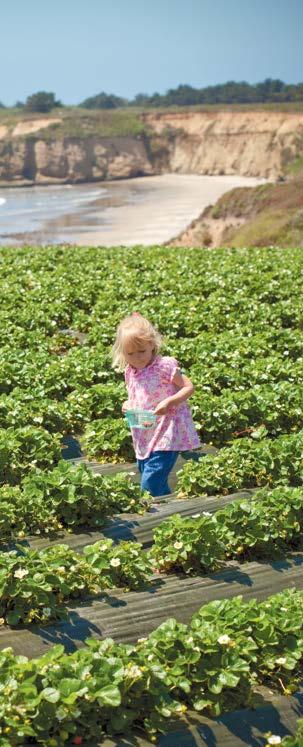
Whether you pick or grow your own berries or purchase them at an area market, remember that even in our seemingly perfect climate, the berry season is brief! To make the most of it, see our guide to fruits in season on p. 17 and berry recipes from Le Cigare Volant on p. 28 and on our website.
Deborah Luhrman was once the Santa Cruz County bureau chief for Channel 46 news. She has been traveling the world and spending too much time on airplanes for the past 25 years. So she returned to Santa Cruz to grow a garden and write about local issues.
www.ediblemontereybay.com 27
Photo by Patrick Tregenza
U-Pick with a view: strawberry field at Swanton Berry Farm.
Cooking with Berries
Chef Ryan Shelton of Bonny Doon Vineyard’s Le Cigare Volant restaurant loves berry season.
“When I was growing up, my mom used to go to Gizdich Ranch for berries and make me olallieberry pies on special occasions,” he says.
Shelton likes to mix fresh and frozen berries when he makes a pie or cobbler to give it a “more interesting texture and depth of flavor.” He also advises baking the fresh strawberries on top of a tart to bring out their “deeper apricot notes.”
But you will never find a mixed-fruit compote or mixed-berry pie on the restaurant menu. “You wait all year for the season, you source locally, then you bury the flavors,” he gripes. “I like to let the ingredients sing of what the taste is going to be.”
While he appreciates all berries, Shelton says blueberries are the “unsung heroes” of the culinary world. “They are so good, so nutritious and there are so many things you can do with them,” he says. Try making his Smoked Duck and Blueberry Flatbread from this recipe.
Smoked Duck Flatbread with Blueberry

2 6-ounce packages prepared pizza dough 1/2 pint blueberries, halved 12 thin slices smoked duck breast, or if duck is unavailable, thinly sliced ham
1 teaspoon balsamic vinegar
1 tablespoon extra-virgin olive oil
1/8 pound shredded mozzarella
1/4 pound arugula
1/4 red onion, sliced very thin
Roll out the dough very thinly, under 1/8-inch thick, into two rounds. Sprinkle dough first with shaved red onions, then cheese, and top with blueberries. Bake at 400° F on a pizza stone until browned and crispy. Remove from oven and slice. Mix olive oil with balsamic vinegar and dress arugula. Top flatbreads with arugula salad. Lay shaved duck over flatbreads and serve.
RECIPE: For Shelton’s recipe for Strawberry Parisian Tart, click on the “RECIPES” tab on our website, www.ediblemontereybay.com.
28 edible monterey baySummer 2012
Courtesy Ryan Shelton, executive chef at Le Cigare Volant Serves 4
Photo by Ted Holladay


www.ediblemontereybay.com 29
Out to Sea Fresh Sardines
Catch them while you can
By Lisa Crawford Watson Photography by Patrick Tregenza
Back in the days when Cannery Row was still home to the activity that inspired its name, no one had to ask if the sardines were running. They could smell the sleek fish, hear the syncopated rhythm of sardines carried up conveyor belts and see the steam rising from the canneries.
Up at 701 Wave Street, “The Cafeteria” served lunch in shifts to the workers of some 16 canneries, each releasing their crew to a different tone of the dinner bell so as not to overwhelm the lunch room. Comrades would gather for a cup of coffee and a 10-cent sandwich or for the splurge of another quarter, they could get a hot meal.
In 1968, Hovden was the only remaining cannery. The Cafeteria was replaced by The Sardine Factory, an upscale restaurant whose white-gloved waiters wore tuxedos to serve everything from sardines to steaks. Today, the gloves and tuxedos are gone, but the glamour continues, and sardines are still served when available.
While the canneries are gone now, the sardine fishery eventually reopened. This July, when the summer sardine season starts, the boats will be back out in force. And that’s great news for the increasing numbers of local residents who crave this savory, healthful and inexpensive little fish, because they know that fresh sardines are best.
During the mid-1800s, fishermen and their families came from Asia, then Italy and, eventually, other parts of the world to cultivate a prosperous new life in the Monterey Bay area. They found their future, if not their fortune, in sardines, having understood the oily fish as a vital source of income, as well as a staple in their healthy diet.

What they did not can or crush for fishmeal fertilizer, they consumed—until the sardines stopped swimming, the canneries closed and folks sought other ways to sustain themselves.
Yet the sardines never actually disappeared, says Briana Brady, acting senior environmental scientist for the California Department of Fish and Game (DFG), Marine Region. “Sardines were not endangered,” she says, “but they were no longer in abundance. Sardines go in cycles. Once the abundance came back up, the DFG allowed them to be harvested again.”
In fact, because sardines are small, low on the ocean food chain and quick to mature, they are prized by environmentalists and are considered a “best choice” for sustainability by the Monterey Bay Aquarium’s Seafood Watch program.
30 edible monterey baySummer 2012

www.ediblemontereybay.com 31
This page, Anthony Russo, captain of the King Philip. Opposite, Dominic Mercurio of Café Fina and Domenico’s on the Wharf.
Technically, says Brady, the sardine season is year-round. Yet the fishery year is divided into three periods, each of which lasts only until a designated harvest quota is met, so in practice, the sardine season can be fleeting, and it’s impossible to know in advance how long it will last. The summer season is the biggest. It starts July 1 and permits the harvest of 38,964 metric tons of sardines but runs only until that quota is met, or Sept. 14—whichever comes first. There also are two longer seasons that allow smaller harvests, one beginning January 1 and another, September 15. (The quotas are set
the first season lasted more than six months, but the following two seasons were only 17 and 9 days. Last year, the fishing continued for two months, followed by one week and, finally, just six days, before quotas were reached.
Locally, Whole Foods carries fresh Monterey Bay sardines when they can get them, as does Sea Harvest fish market and restaurant in Monterey and Carmel, Monterey Fish Co. in Monterey, Stagnaro Bros. Seafood Inc. in Santa Cruz and The Fish Lady in Soquel, to name a few.

“Sardines are in high demand,” says The Fish Lady’s Sharon Hadley, whose shop also sells meat, fish, poultry, wine and cheese. “I think people are realizing how good they are and how good they are for you with all those omega 3s. Because their availability is so sporadic, we bring in enough to sell fresh, and then quick freeze and vacuum seal the rest. People buy them right out of the freezer.”
by the Pacific Fishery Management Council and the National Oceanic and Atmospheric Administration (NOAA), and like all fishing quotas, are aimed at protecting against over-fishing.)
The seasons vary from year to year, but your best chance for bringing home fresh local sardines—or finding them on the menu of area restaurants—will come from starting watch for them as soon as the three seasons open, on Jan. 1, July 1 and Sept. 15. In 2009, says Brady, the first season shut down after 40 days, the second after 13 days, and the third season after a mere eight days. The following year,
Fresh or frozen, Dominic Mercurio has been eating sardines all of his life. Growing up in a multi-generation Monterey fishing family, Mercurio considers sardines a staple in his diet. His preference is for barbecued sardines, filleted and grilled on an open fire, with salt, pepper and a little cumin. He serves them the same way at Café Fina and Domenico’s on the Wharf, his two restaurants on Fisherman’s Wharf in Monterey.
“Barbecued is preferred,” says Mercurio. “It’s such an oily fish, but it’s the oils that give it intense flavor. It’s a childhood thing. My dad would bring it in off the boat, and we’d sit in the backyard while he grilled it. Asking why I like sardines is like asking a person why he eats caviar. It’s that intense ocean flavor.”
32 edible monterey baySummer 2012
Asking why I like sardines is like asking a person why he eats caviar.
It’s
that intense ocean flavor.
Sea Harvest fish market and restaurant has its own fishing boat, but the crew never knows when it will get sardines—and it finds interest in the fish varies, too. “A lot of people on the Peninsula don’t like the bones in sardines,” says Dimas Lopez, manager of Sea Harvest Monterey. “They want a filleted fish; everybody is in a hurry. Dimas says most sardines are sold overseas or in Chinatown, but the store’s Portuguese, Italian and French customers look for whole sardines.
Monterey Fish Co., whose patrons are best directed to their market on the wharf by the sound of barking seals and the fragrance of fresh fish, has been riding a swell of interest in sardines coming from both restaurants and consumers.
“The Europeans who come to town are used to sardines, and a lot more Americans are starting to catch on to the health benefits of the fish, as well as their good taste,” says Sal Tringali, whose company offers sardines at about $1 a pound. “We sell a lot of sardines to the local restaurants, as more and more seem to be putting sardines on the menu. When the season begins, fishermen stop what they’re doing and go fishing for sardines. But once the quota is filled, the season is closed, and we all wait until the next period.”
Anthony Russo, captain of the King Philip, one of the biggest fishing boats on the Monterey Bay, he says, has been fishing for sardines some 45 years.
“I’m the guy who’s catching them,” says Russo. “I think, because it’s a smaller fish that doesn’t take on much mercury or other pollutants, and because it is a healthy fish with all those heart-healthy omega 3s, plus its wonderful storied history, the sardine is making a comeback in the waters and at the table.

“When we talk sardines, we don’t mean those teeny fish from Norway you eat with crackers. Ours are bigger, but they’re still oily, with a lot of bones, which doesn’t appeal to everyone. They’re kind of like tuna. The public doesn’t know about sardines because they haven’t been marketed by StarKist’s brainchild ‘Charlie the Tuna.’ But I’ll tell you, unlike tuna, which is very bland—people don’t realize with a tuna sandwich they’re enjoying the mayonnaise and celery—sardines are flavorful. If you prepare them right, they’re good and good for you.”
Shape magazine’s Jessica Smith reports that the fish is full of fat-fighting compounds that help stabilize blood sugar. She notes they are also rich sources of CO enzyme Q10, vitamin B12, selenium, calcium, phosphorus and vitamin D, and yes, those omega-3 fatty acids that everyone is focused on. They are also satiating, packed with protein, and all in all she considers sardines superb diet food— unless, of course, you slip the filleted fish on a toast point slathered in some kind of aioli sauce. Then the sardine diet slips off the scale.
The DFG’s Brady says she really enjoys fresh sardines, particularly grilled, but also admits to dropping by Whole Foods for canned sardines packed in oil, which she serves on crackers.
Sardine dishes are becoming increasingly popular menu items at several area restaurants, including Oswald in Santa Cruz, where Chef Damani Thomas prefers them pickled. “This is my take on a Spanish dish called Escabeche, served with carrots, capers and some shallots,” says Chef Thomas. “To pickle the sardines, I usually use a sweet vinegar, like balsamic or apple cider vinegar. It’s just incredible. I filet and lightly flour the fish, and then sauté it quickly on the skin side to crisp
www.ediblemontereybay.com 33
Sardine Bocadillo with Mojito Aioli Serves 3 to 4
I’d say 80% of people are terrified of sardines and the other 20% love them—it’s a fear-factor type of thing. Once we get people to have them, they like them—most love them. People think they’re fishy, but fresh sardines aren’t fishy at all. It’s a great fish—it’s small, it’s low in mercury…the best part is they’re cheap as hell. —Brendan Jones
10 fresh or frozen whole sardines
1 sourdough baguette
1 lime, juiced
1 cup fresh mint leaves
4 egg yolks
12 ounces canola or neutral-flavored oil
1 teaspoon salt
2 ounces olive oil
Tools: Sharp knife, 1-quart round container, griddle, immersion blender with whisk and chopping attachments
For the sardines: Put sardines in a container of cold water. De-scale sardines in water, pat dry with paper towel, cut down either side of spine to fillet. Put fillets aside, keep cool.
For baguettes: Cut bread into angled slices as thin as possible at the average length of fillets. Prepare twice as many pieces as you have sardines, so 20 slices for 10 sardines.

For mojito aioli: Put mint, yolks, lime juice and salt in 1-quart round container. With immersion blender and chopping attachment, blend until mint has been chopped into small pieces. Next, attach whisk and whisk mixture at an angle, drizzling in the canola oil very slowly until all canola has been emulsified into mixture. (It helps to have a second person hold the container for you.) Taste. Add more salt or lime juice as needed. If mix is too hard, you can mix in a couple tablespoons of warm water. Keep cool.
Make sandwiches from the bread and fillets, and place on flat cool plate or tray. Brush both top and bottom of each sandwich with olive oil. Do not be shy with olive oil. Once griddle is at 375° F, place a couple sandwiches on griddle. Cook each side of sandwich until golden brown. Make sure you press down on sandwiches while cooking, so the protein binds to the bread, causing the sandwiches to stick together.
Put on plate and serve aioli as a dipping sauce.
34 edible monterey baySummer 2012
Courtesy Brendan Jones, co-owner and chef at Carmel Valley’s Lokal, and also a chef at the Cachagua General Store, the Carmel Valley restaurant where he originated this recipe.
it up a bit. The pickling liquid gets poured warm over the sardine, and then it sits for 24 hours. Served with a little watercress salad, it’s just delightful. It’s labor intensive but so tasty, it’s worth it.”
Other local favorites include sardine sushi served at Crystal Fish in Monterey, and the Sardine Bocadillos with Mojito Aioli, offered at both the Cachagua General Store and Lokal, in Carmel Valley. (See recipe opposite.) If you’re not already hooked on sardines, beware: These restaurants just might make them a heart-healthy habit.
Lisa Crawford Watson lives with her family on the Monterey Peninsula, where she is a freelance writer and an instructor of writing and journalism for California State University Monterey Bay and Monterey Peninsula College.
Editor’s note: As this issue of EMB went to press, sardines were a hot topic at Cooking for Solutions at the Monterey Bay Aquarium. Search for coverage on our blog by typing “sardines” into the “search” box on our home page.
Fresh Grilled Sardines with Salsa
Courtesy Dominic Mercurio, owner of Café Fina and Domenico’s on the Wharf, Monterey
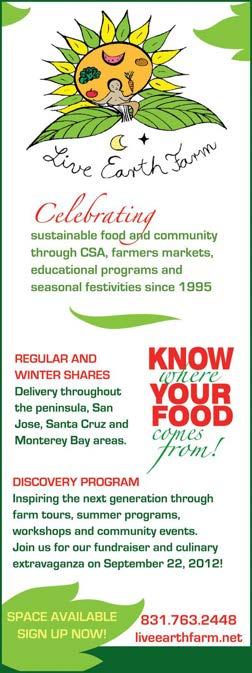
Chopped tomatoes Red wine vinegar
Chopped fresh garlic
Oregano Lemon juice
Olive oil
Salt, pepper and cumin
Fresh sardines
Combine first six ingredients. Fillet sardines and grill on an open fire with salt, pepper and a little cumin. Serve with salsa.

www.ediblemontereybay.com 35
Edible Community Reimagining San Benito County
A foodie frontier seeks its seat at the table
By Deborah Luhrman
The sign on one of the many vacant storefronts in downtown Hollister read: “This space is not empty, it’s full of potential.” So Kathina Szeto—who had no previous retail experience—made what she calls a “giant leap of faith.” Last July, she opened a little shop named San Benito Bene, selling locally made olive oils, culinary products, crafts and cosmetics. On one of the walls, she hung a map of the county that shows where each product is from. “I wanted to be part of the solution to revitalizing downtown,” she says, “and raise awareness and pride about the amazing foods that we have here.”
After withstanding a decade of economic hardship, Szeto and a growing nucleus of other San Benito residents are rejecting the idea that progress means becoming part of the sprawling suburbs of Silicon Valley. Instead, they are embracing a new vision for the future based on local farming and ranching traditions.
“Agriculture is a defining part of San Benito County. We have been growing crops for generations,” says Julie Morris, executive
director of Vision of San Benito County, a community development project, and with her husband, Joe, owns Morris Grassfed Beef. “We have the largest organic lettuce producer here, world-class Blenheim apricots that don’t grow anywhere else, cattle and awardwinning wines.”

San Benito County is a land of wideopen skies, vast grazing lands that turn emerald green in the spring and miles of vegetable fields punctuated by heirloom orchards. It is home to a famous mission in San Juan Bautista, the craggy Pinnacles National Monument and a strong Western heritage in Hollister. But best of all, it enjoys a special climate that allows year-round growing and supports almost every kind of edible. About 35% of its agricultural acreage is farmed organically—compared to 30% organic in Santa Cruz County, just 6% in Monterey County and less than 1% nationwide.
Located at the southern tip of the Santa Clara Valley, residents say San Benito County reminds them of the way San Jose was back
in the 1940s and ’50s. So it’s not surprising that most people expected the Bay Area to continue to grow southwards and eventually gobble up the countryside, making everyone rich in the process.
Boom and bust
A building boom started in Hollister in the 1980s and spread to rural areas, which were carved up into 5-acre parcels for development. Job growth did not keep pace, so many of the newcomers commuted to work outside the county, particularly in Silicon Valley about an hour away. New construction kept the economy humming until 2002, when the town’s sewer system reached capacity and a building moratorium torpedoed Hollister’s growth. The economy spiraled downward.
This page, Phil Foster. Opposite, clockwise from upper right: Beets, Grant Brians, Kathina Szeto, Julie Morris, Jim and Mari Rossi, sign for San Benito Bene.
36 edible monterey baySummer 2012
Holladay except center left, which is by John Lawn, and center right, which is by
All photos this page and opposite by


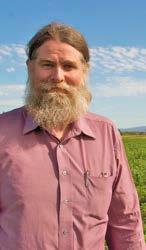



www.ediblemontereybay.com 37
Ted
Debo rah Luhrman.
A Wine Road Less Traveled
Early summer is the best time to visit San Benito County. Here is a plan for a delicious Saturday excursion—full of food and wine.

Start out by stocking up on colorful vegetables from the Pinnacle Organics Farm Stand in San Juan Bautista (open 8am–1pm Saturdays). Drive over to Hollister, picking up some fresh apricots and cherries along the way. Stop for coffee and a pastry at Heavenly Bakery, stick your nose into San Benito Bene next door to buy locally made soaps or lotions, then get some picnic supplies at The Market. Head south up a winding road for about 20 minutes to the beautiful Cienega Valley—home to a largely unknown wine trail.
Cienega Valley is a long, narrow viticultural area in the Gabilan Mountains and runs right alongside the San Andreas Fault. There are beautiful oak-studded hills on the way up to the vineyards. Three wineries are currently open to the public on weekends.
DeRose Vineyards occupies a cavernous warehouse that once belonged to Almaden wine. Owner Pat DeRose, known for his big handlebar mustache, and his son Alphonse have been making wines from old vine grapes on the property since 1988. But it’s been a winery since 1851 and some of the Negrette and Zinfandel vines they tend are more than 150 years old—and all are dry farmed. Try the Hollywood Red, an old vine Zinfandel blend named for one of the vintage cars the family keeps in the winery. Their Car Museum is open from 11am–3pm on the first Saturday of each month.
About a mile down the road, stop and visit the stately, red-brick Pietra Santa Winery. Its Cabernet Sauvignon and Sangiovese are perennial medal winners in the San Francisco Chronicle wine competition. The 450-acre estate also grows olives and presses and sells three varieties of olive oil, which can be sampled in the tasting room. There are picnic tables next to the vineyards, so this might be a good place to break out the lunch.
There are more picnic tables with sweeping views of the mountains at the final stop, Calera winery, a high-end Pinot Noir specialist with an unpretentious feel. Owner Josh Jensen picked the remote spot, known for its limestone soils, for his winery after searching for a terroir that would produce wines like he had enjoyed in Burgundy. His 2007 Mt. Harlan Selleck Vineyard Pinot Noir graced the cover of Wine & Spirits Magazine last winter after coming in as the publication’s top-scoring wine with 96 points. That vintage is no longer available, but there are plenty of other fine pinots to taste before heading home. —DL
“We were in a recession before the recession happened,” says Mary Anne Hughes, executive director of the Community Food Bank of San Benito County. “Then the new sewer plant opened in 2008 and the week after the moratorium was lifted, the foreclosures started.”
Hughes, who this year will feed 10,000 to 12,000 hungry people (out of a total population of just 55,000) with Food Bank programs, knows how bad things got. “At one point San Benito County was the fourth most distressed county in the nation,” she says, citing the Associated Press Economic Stress Index that measures unemployment, foreclosure and bankruptcy rates. Unemployment hit 24% at the height of the recession and is still well above the national average at 18%, according to the latest figures for March 2012. Predatory lending and foreclosures were so bad that approximately 400 homes remain uninhabited today.
About 60% of residents now commute to jobs outside of the county, leaving for work in the dark and coming home after dark. “There are so many social consequences of commuting. It’s very detrimental to the community,” says County Planning Director Gary Armstrong.
“You don’t have parents here taking care of their kids after school or becoming involved in community activities. They are spending their dollars outside of our community, which hurts our tax base and has a ripple effect on businesses,” he adds.
Back to the future
Faced with this grim scenario, the nonprofit Community Foundation decided it was time to do some soul-searching and help the county figure out where to go next. With a $75,000 grant from the Packard Foundation, the Vision San Benito County project collected ideas from 17 “listening sessions” held in 2010 and 2011. Some 800 residents contributed to the visioning project, which ended with a three-day summit last October.
“The final report provides a blueprint for the direction of the county,” says Julie Morris, who headed the project. “Not to say that there are not conflicts, but we were looking for points of consensus.”
Top priorities were identified as job creation and better education, but participants also
38 edible monterey baySummer 2012
expressed a great desire to retain the rural feel of the county—and capitalize on its bounty of fine wines and agricultural products..
“I think food can actually be part of how we define ourselves, much like Marin or Sonoma Counties do, Morris says. “San Benito County isn’t as famous because we haven’t marketed ourselves as much, but you can find just as many good foods sourced here as in Marin County, and there’s a movement of people who are starting to recognize that,” she says.

The county is also looking south to Paso Robles for inspiration. There, the local food movement and wine industry have teamed up to revitalize the region, turning a once-sleepy cow town into a popular tourism destination.
Results of the visioning project were fed into the new county General Plan for 20122035, which is expected to go to the Planning Commission this summer and be completed by the end of the year. It already includes a wine and agritourism overlay zone; small-scale tourism projects like bed and breakfast inns have been promised fast-track approval.
In effect, the community is making the most of an advantage created, ironically, by its recent hardships: Because the housing
bubble burst, most of San Benito County’s rural, agricultural character and all of the potential that goes with it were preserved.
“Let’s hope we can keep it that way,” says Morris.
Organic epicenter
Phil Foster, owner of Pinnacle Organics, bought his first farm near San Juan Bautista in 1993 by cobbling together six of those 5-acre parcels previously slated for development and “preserving them for agriculture in perpetuity.”
“I grew up in a suburban area near Bakersfield, so the ruralness of San Benito County really appealed to me,” he says. “I liked the climate, and I liked the little town of Hollister.”

Foster and his wife Katherine have successfully tapped into the growing locavore movement and expanded their operations by focusing on distribution to shops in Santa Cruz and Monterey, as well as at 10 regional farmers’ markets and Whole Foods. “People want to know where their food comes from and want to buy locally when they can,” he says.
Nowadays, he farms 270 acres in San Juan Bautista and in the Santa Ana Valley east of Hollister, growing 70 different crops throughout the year, including apples and cherries.
Foster can be found most Saturday mornings at a farm stand on his original property, which operates year-round to provide just-picked organic produce to the local community at bargain prices. “There weren’t
www.ediblemontereybay.com 39
About 35% of its agricultural acreage is farmed organically—compared to 30% organic in Santa Cruz County, just 6% in Monterey County and less than 1% nationwide.
a lot of outlets for organic produce,” he says, “so this has been a good deal for people who are willing to drive here.” Foster says he enjoys having a relationship with his customers and finding out what products they would like to see him grow. In response, this summer he is experimenting with a Mexican herb called epazote and growing casaba melons for the first time.
San Benito County is home to some 34 organic growers, and their produce has become an acclaimed and important part of the larger Monterey Bay foodshed. Swank Farms’ vegetables, for example, are served at some of the best restaurants in other parts of the region, like Aubergine in Carmel, Bernardus and Carmel Valley Ranch in Carmel Valley, and 1833 in Monterey.
Other local organic farms include Catalan Family Farms, Coke Farm, Bonny Doon Vineyard’s new Popelouchum ranch and the biggest, Earthbound Farm, has 1,100 workers and is the largest employer in the county and the largest organic grower in the U.S.
“The best way to preserve agricultural land is for it to remain profitable,” says Samantha Cabaluna, director of communi-
cations for Earthbound, which Drew and Myra Goodman founded in Carmel Valley more than 25 years ago, and moved to San Juan Bautista in 1996.

“We have been able to take really wonderful organic practices and scale them to a size that allows us to run a company that provides good benefits for its employees and puts good food on people’s tables.” Earthbound has about 4,000 acres in cultivation in San Benito County and a total of 40,000 acres on 200 different farms throughout our area, as well as in the Central Valley, Washington and Oregon.

Scale is also important to Grant Brians, who farms the 100-acre Heirloom Organic Gardens started by his mother Janet in 1973.
“Every time you take out another chunk of ag land, it makes it harder for the remaining farm land to stay profitable,” he says. “You need a certain amount of land to support things like equipment dealers and fertilizer suppliers. And if you are going to have a processed product, you need freezers and canneries.”
The Brians’ farm was certified organic in 1976 and is the only remaining original member of the CCOF Central Coast chapter. Like his father, Grant worked as an engi-
neer at several high-tech companies in Silicon Valley up until the dot-com crash. “Commuting is something that sucks the life out of an individual, all those hours just getting from home to work and back. I know what I’m talking about,” he says.
On the other hand, farming gives him great pleasure.
“I’m addicted to farming. Ultimately, you end up with these amazing creations, and it’s just so astonishing that they could come from a tiny seed,” he says. “It never ceases to give me joy.”
Beyond vegetables
Apricots, cherries, almonds and walnuts are the other traditional local crops. Gibson Farms Inc. grows them organically and sells at farmers’ markets, as does conventional grower B&R Farms.
“The Blenheim apricot loves the soil and climate of San Benito County,” says Mari Rossi, who runs family-owned B&R Farms with her husband Jim. “It is the best apricot in the world, but you can’t find them fresh in supermarkets because they have a
40 edible monterey baySummer 2012
very thin skin and can’t be shipped, so they are strictly a drying apricot.”
The Rossis have 100 acres of apricot orchards near Hollister. They sell dried apricots at farmers’ markets, along with a line of apricot preserves and gourmet sauces developed by Jim’s mother. They also have a small shop on their farm and those-in-the-know call ahead to order boxes of fresh fruit during apricot season at the end of June.
“We used to have 50 apricot growers here, but now we’re down to two,” she says. “It’s unfortunate that we’ve lost so much ag, but we still have a beautiful area.”
Taking advantage of the local produce, Hollister’s Marich Confectionery specializes in chocolate-covered dried fruit and nuts, while DeBrito Chocolate Factory is known for preparing 40 different kinds of candied apples. Both factories are open to the public.
Organic eggs and chickens from Pasture Chick Ranch (See EMB, Winter 2011), freerange chickens from Hain Ranch Organics in Tres Pinos, grassfed beef from the Morris Ranch, Paicines Ranch and Douglas Ranch (See EMB, Spring 2012) and pasture-raised lamb, pork and beef from Your Family Farm
are all adding to the critical mass of local products that makes up San Benito County’s emerging foodie movement.
Revitalizing downtown
In downtown Hollister, several new shops have opened on San Benito Street to showcase local foods. The Heavenly Bakery prepares apricot everything, from pies and turnovers to apricot bread pudding and even apricot smoothies. The Market & The Butcher Shop has started selling Morris grassfed beef alongside its homemade sausages, deli sandwiches and local wines.
But the best place to see and taste all the area has to offer is at the Hollister Farmers’ Market, held downtown on Wednesdays from 3–7pm from May through September.
The festive atmosphere includes 23 farmers, live music and 40 other types of ven-
dors like artisans, take-away food, nonprofit organizations and local merchants.
“It brings everyone out,” says Manager Tammy Jackson. “We’re such a bedroom community that this is the only time some people come downtown to see what we have here.”
She has grown the market from 19 booths four years ago to full capacity today. In the process, it has become a focal point for the local food movement and an inspiration for a new direction for San Benito County— a place that is turning back to its roots to find a new road to the future.
See sidebar, p. 38 for a suggested itinerary for a delectable day trip to San Benito County. And for tourism information, contact the San Benito County Chamber of Commerce at 831.637.5315.

RECIPE: See “RECIPES” tab on the EMB site for the Rossis’ Dried Apricot Focaccia.

www.ediblemontereybay.com 41
I’m addicted to farming…
It never ceases to give me joy.
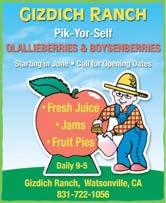
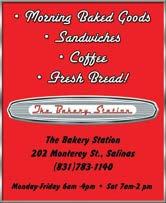

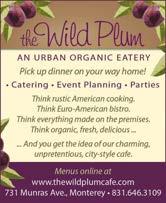
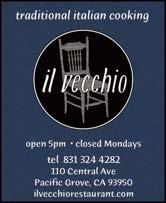
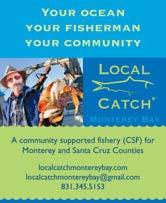

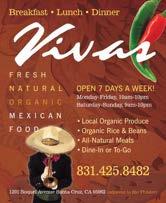
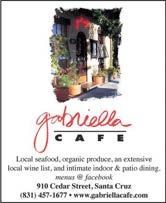
42 edible monterey baySummer 2012
Monterey Bay marketplace • Monterey Bay marketplace
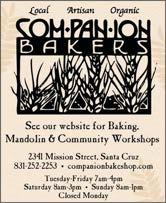

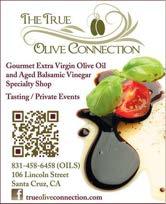


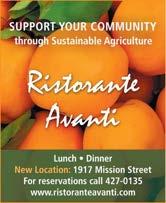

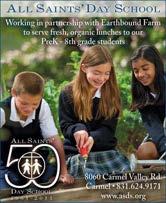

www.ediblemontereybay.com 43
•
Monterey Bay marketplace
Monterey Bay
marketplace
It’s a blustery March day in the hills above Carmel Valley. The whitecaps on Monterey Bay are visible eight miles to the west, as are the snow-topped peaks around Chews Ridge. Winter isn’t ready to call it quits just yet.
Robb Talbott shifts his flatbed pickup into low and maneuvers us down a narrow dirt road through his storied Diamond T Vineyard. “Look over there,” says Talbott, pointing to a row of vines that make up part of the property’s 14 acres of Chardonnay and Pinot Noir. “Buds are starting to pop out. That’s not good. There’s a chance of getting some frost before warmer weather comes.”
Indeed, the night before, temperatures on the mountain dropped to 35 degrees, dangerously close to the freezing point that many local winemakers dread. A good dousing of rain has also turned the clay-topped roads treacherous. Suddenly, the back end of the truck fishtails out towards the edge of a 100-foot ravine, and Talbott quickly puts it in park and stamps down on the emergency break. “I think we better walk,” he says with a smile. “We’ll head back to the house and get another truck.” Sounds good to me.
It used to be that anyone who’d lived on the Monterey Peninsula for any length of time instantly connected the Talbott name to the business Talbott’s father began in 1950—men’s ties and shirts.
But more and more, the name is tied to Robb Talbott’s own venture and his abiding love—his winery, Talbott Vineyards. Talbott’s Diamond T Chardonnay vines made a splash with a perfect 100-point score from Wine Spectator in 1990, just eight years after they were planted. And over the years, Talbott, along with his newer vineyard, Sleepy Hollow, and his winemaker, Dan Karlsen, have continued to garner high praise from critics and consumers alike. Both Talbott and Karlsen are profoundly dedicated to making great wine and doing so with minimal impact on the environment. By the end of this year, their efforts should win them Sustainability in Practice (SIP) certification for sustainable winemaking.
“I started working at age eight for my father,” remembers Talbott, “making boxes for 25 cents an hour. I also worked the retail store in Carmel Valley and delivered ties on my way to high school. My parents believed in the value of hard work, and they instilled a work ethic in me at a very young age.”
But while Talbott remains chairman of the family clothier, he never liked wearing suits himself—he even joked at the wedding of one of his children, Sarah Case Hawthorne, last year that he’d had to go out and buy one for the occasion.
It was a1959 trip to Europe that changed everything for him.
“I got a chance to try white Burgundy wine, which they mixed with water for children,” he says, remembering the fabric-buying trip that he took with his family at age 11. “I remember how much I loved the flavors, and from then on they were etched on my palate.”
Back stateside, Talbott, who grew up in Carmel Valley, eventually left for Colorado, where he majored in fine art at Colorado College, took up motorcycle racing and started an antique car restoration business. After returning to Carmel Valley, he worked in the tie business and pursued a variety of other jobs, including carpentry, plastering, firewood cutting and landscaping. When he married in 1981, he saw his chance to start his own winery, and began planting Diamond T a year later.
On the vine Labor of Love
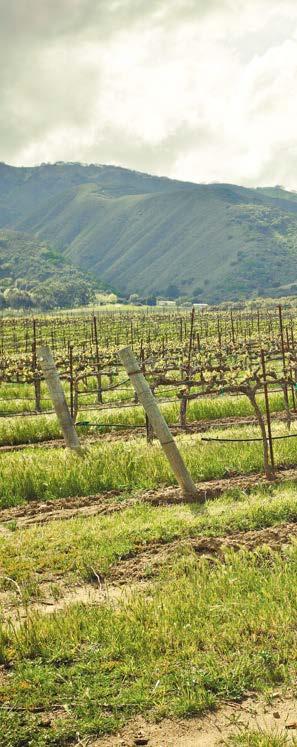 By Pete
Photography by
By Pete
Photography by

44 edible monterey baySummer 2012
Talbott Vineyards’ Robb Talbott and Dan Karlsen
Rerig
Ted Holladay
‘It was abusive work, and in the first year I had six people quit. They said I was crazy, that the work was too hard… It was a gamble planting here, and I made a lot of guesses, but happily it paid off.”

www.ediblemontereybay.com 45
Robb Talbott and Dan Karlsen at Sleepy Hollow.
“I built a cabin here all by hand, and we didn’t have electricity for the first eight years,” says Talbott, pointing to the original house, where he lives today with his wife, Vivienne. Always a truck fanatic, he named the ranch “Diamond T” after the classic old truck model that he has continued to collect and restore.
The early years weren’t easy: The steep hillsides—including the one we almost plummeted off—threatened to flip over tractors on a regular basis, so much of the work had to be done by hand. “I had to excavate each hole with digging bars,” recalls Talbott, “and then bring in soil from another part of the property and plant the vine. It was abusive work, and in the first year I had six people quit. They said I was crazy, that the work was too hard…it was a gamble planting here, and I made a lot of guesses, but happily it paid off.”
The land has been good to Talbott, and he has always believed in being a good steward of the land.
“I’ve been a recycler since the 1970s. I built my house with recycled materials,” Talbott says. “I treat the land gently, using mechanical weed removal rather than chemical. If we have to use chemicals, we use as little as possible, and make sure they break down organically and don’t harm the soil.”
All of Talbott’s wines are made from grapes grown at Diamond T and Talbott’s other vineyard, a renowned property called Sleepy Hollow in the Santa Lucia Highlands. The latter is comprised of 540 acres of vines—one-third Pinot, two-thirds chard, with a smattering of Riesling, which is used only for late harvest wines in small batches. Talbott bought it in 1994, but it was already established with an old planting of Wente clone vines.
Talbott’s passion and independence have been met recently by another passionate, independent soul in winemaker Dan Karlsen, who came to Talbott four years ago after about 10 years at Chalone Vineyard, and more than 30 years in the winemaking business overall. Some have described him as being like a wise professor, and at the same time a bit of a pirate and a rebel. (Karlsen also has his own acclaimed label, Chock Rock Vineyard.)
“Robb and I think a lot alike. I said to him, ‘let’s do everything under one roof,’” Karlsen says. “‘Let’s put together the best sales team possible and sell lots of wine. Let’s streamline our processes, from crush to barrel fermentation to bottling and labeling to shipping.’ We’re 100% estate grown, and we don’t sell our grapes elsewhere. That’s why I believe we have a superior product.”
Also like Talbott, Karlsen feels a deep connection to the land they farm, especially Sleepy Hollow.
“This is a very different vineyard than Diamond T, world class and untouchable by any other vineyard in the world,” Karlsen says. “Everything grows in the same soil, with the same northeast exposure, so everything comes ripe at the same time. It’s just an amazing place to grow grapes.”
“My job as a viticulturalist boils down to one thing—when to pick. There are really only three flavors in a grape; under ripe, ripe and over ripe,” Karlsen says. “Knowing when to pick is the difference between a terrible wine and a great wine—one that makes you want to have a second glass.”
As Karlsen and I move among dozens of stainless steel tanks and row after row of French oak barrels, he opines on the topic of the traditional heavy wine bottles versus lighter Eco-Glass.
“Heavy bottles have to go, and I think we have the power and influence to convince glass producers of this. I’ve seen empty wine bottles that weigh more than one of our full bottles! That’s a tremendous waste of energy and resources, and it’s completely unnecessary for wine quality,” Karlsen says. “We can save more than four tons per truckload during shipping. That translates to significant fuel savings, especially for wineries like ours that produce more than 1.4 million bottles a year.”
Likewise, Karlsen is a big supporter of screw caps.
“There’s no doubt that screw caps are the future for wine,” Karlsen says. “Screw caps are superior in every way—they can be recycled, use less energy to produce and help save our product.”
Embracing low-energy mechanization is also part of Karlsen’s philosophy, and it shows in every corner of the building, from custom-built crushers with moving platforms to manual punch-down devices. “We even have automatic barrel washers that use a fraction of the water of traditional hand washing.” He also shows me the state-of-the-art machine through which all Sleepy Hollow and Diamond T wines are filtered, eliminating the need for multiple devices that use more energy.
Back outside, I query Karlsen on his personal philosophy about using the land to its highest potential without stressing it beyond its limits.
“The key is to plant vines that love this particular climate and soil, “Karlsen says. “Plant them where they don’t want to be and they won’t thrive, and you’ll spend time and resources—and lots of chemicals—forcing them to adapt. That’s terrible for the vine and terrible for the environment.”
To that end, Karlsen has moved Sleepy Hollow towards a chemical-free existence, using organic products to control mildew and hand tilling under vines rather than spraying herbicides. “Unfortunately, there are some serious pests here because of our proximity to the row crop farms in the valley, but we’ve been very lucky and haven’t seen infestations.”
But all of the science aside, it’s a love of the land and the art of making great wine that ultimately drives both Karlsen and Talbott, and there is no better evidence of Talbott’s love for his wines than the fact that he has named them after his children, Kali Hart, Logan and Sarah Case. And he knows he owes the success of his wines, ultimately, to the land.
“I’ve come to appreciate the fact that we don’t own the land. We’re only caretakers, and we need to respect nature always,” Talbott says. Lucky for us all, the results of his caretaking are worth celebrating.
The former managing editor of Charleston magazine and a lifelong foodie and history buff, Monterey resident Pete Rerig works at Museum of Monterey and as a freelance writer.
46 edible monterey baySummer 2012

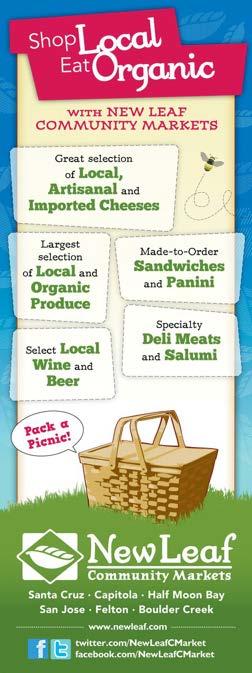


48 edible monterey baySummer 2012
The Preservationist Cherries and Apricots
Capturing summer’s arrival
By Jordan Champagne
They say that “life is a bowl of cherries” for a reason. It is not a bowl of oranges or bananas or onions. Wherever they grow, cherries are the grand kickoff party for summer’s fun: They are tart and sweet and juicy and promise the hot days of summer have arrived!
Cherries and apricots are inextricably linked in my mind because they are the two crops that Van Dyke Ranch in Gilroy focuses on—and grows amazingly. I am usually pretty flexible with my food choices as long as they are local and organic. For instance, I will eat organic strawberries from a variety of local farmers, and I enjoy their diverse flavors and nuances. Not so with cherries. The Van Dykes have been growing Blenheim Apricots and Bing Cherries in southern Santa Clara County since 1921 and grow fruit that meets your high expectations every time. Five generations later, they have the attention and knowledge to ensure that they provide the most amazing harvest every year.
Cherries are actually a big reason that I began to preserve fruit. Cherries only have a window of perfection of 10 days to harvest from any one tree. So we have 10 days in June to celebrate life—and then what? It just is not enough time.
Cherries are a fruit just begging to be preserved to extend the celebration of their short season. So do not plan your vacations for early June because the harvest is short and varies, and you just may miss it!
Blenheim apricots are a fruit that just wants to become jam. I think that they are one of the rare fruits that actually become better when they are cooked with a little sugar and lemon juice. The color really pops, and the flavor develops rich undertones that are too subtle in raw form. Apricots are the best fruit to experiment with in your initial trials
of making jam, as they just want to cook down and jump into the jar.
You can check our website for workshops to brush up on your summer preserving skills.
Note: I must say that it is very hard for me to write a summer article and not talk about pickling cucumbers, but I had to rein it in. We have included a recipe for crunchy sour dills on the website. Please go to www.ediblemontereybay.com and click on the “RECIPES” tab.
Jordan Champagne is the co-owner and founder of Happy Girl Kitchen Co. She has a passion for preserving the local, organic harvest and loves sharing the secrets she has unearthed. She teaches workshops at the company’s cafe in Pacific Grove.
Happy Girl Kitchen Co. 173 Central Ave., Pacific Grove 831.373.4475 • www.happygirlkitchen.com

www.ediblemontereybay.com 49
Cherry Jubilee
Courtesy Jordan Champagne, Happy Girl Kitchen Co.
This is my favorite way to preserve cherries, and it is also the simplest. When you preserve the cherries whole, leaving in the pits, the texture and flavor are far superior than if you were to remove the pits. I like to think of them as the olive of the dessert table. Pitted cherries have their own obvious convenience and flexibility of use, but leaving the pits in also means you do not have to de-pit 20 pounds of cherries in one day. Then, if you want to use your preserves later for pies or smoothies, the pits will be easy to remove. What a fabulous saving of labor!
I use a very light honey syrup when preserving cherries. I love for the subtle flavors of the cherries to come through, and it is a real treat to drink the liquid once the cherries are consumed. I do not give specific amounts in this recipe; it can be made in any quantity.
Fresh and ripe Bing cherries (pitted or whole) 1/2 to 3/4 cup Honey Syrup per half-pint jar
Honey Syrup recipe ratio: 1 part honey 10 parts water
Pack jars with cherries with a nice firm touch. You want to fit as many cherries in each jar as possible, without crushing them. While you are doing this, heat the honey syrup in a nonreactive pot. Heat to 210° F and be sure not to boil, as we are trying to retain some of the beneficial enzymes present in the honey.
Cover packed cherries with the hot syrup and cap. Process in a hot water bath canner at 210°, 12 minutes for pint jars and 8 minutes for half pints.
Let cool, seal and store in a dark, cool spot. Preserves will keep for one year.

Apricot Jam
Courtesy Jordan Champagne, Happy Girl Kitchen Co.

Yields 9 half-pint jars (will keep for up to one year)
This recipe took a lot of time, trials and patience to come up with. I wanted a low-sugar apricot jam that tasted just like apricots but still retained its delicious sunshine color. I tried using other sweeteners like agave and honey, and the results were not satisfactory. I found this recipe to be the perfect amount of sugar to get that perfect gel. People love this jam.
8 pounds apricots (Royal Blenheims are my favorite) 2 pounds evaporated cane juice 1/2 cup lemon juice
Wash and remove the pits from the apricots and drain very well. Combine fruit with sugar and lemon juice, cover and let sit in a dark, cool place over night. You can let it sit like this for two days if you need to.
The next day, mash the mixture by hand. Add contents to a nonreactive pot and bring to a boil. You will need to boil on high heat with a constant stir until the gelling point is reached. It may be anywhere from 30 to 45 minutes.
Pour into clean half-pint jars. Process in hot water bath canner at 210° for five minutes.
50 edible monterey baySummer 2012






www.ediblemontereybay.com 51

52 edible monterey baySummer 2012
This page, Charlie Hong Kong. Opposite, Lokal. Photo by Patrice Ward
Edible Events
Charlie Hong Kong and Lokal Edible Monterey Bay’s first two Pop-Up Supper Clubs
 By Amber Turpin and Sarah Wood
By Amber Turpin and Sarah Wood
This past spring, Edible Monterey Bay launched a series of Pop-up Supper Clubs aimed at celebrating our local food and drink and nurturing our community of conscious eaters. Events like these also provide a way for the magazine to thank our supporters, build awareness of food-related issues and raise funds for great food-related causes, so we hope you’ll get to attend one soon! To receive advance information on upcoming events, follow our Twitter, Facebook and RSS feeds, and send your e-mail address to info@ediblemontereybay.com. What follows are accounts of our first two events, and the stories of the wonderful people and places that hosted them. See the blog on our website for more about these restaurants and the events we held there. —SW
Santa Cruz, April 22—Here on the Central Coast, Earth Day has become quite the celebration. Beach clean-ups, parties, concerts —you name it, we do it, all in the name of preserving our beautiful planet. This year in Santa Cruz, one such event was Edible Monterey Bay’s April Pop-up Supper Club, which offered participants a unique view into a popular local organic restaurant and Certified Green Business, Charlie Hong Kong, including a tour of one of its enlightened suppliers, the legendary UCSC Farm & Garden.
Since opening in 1998, Charlie Hong Kong has served as a Santa Cruz institution for affordable, convenient, healthy food. Owners Rudy and Carolyn Rudolph aim to provide the community a taste of Southeast Asia, inspired by the abundance of tasty street food found in their travels, and also to incorporate the fresh produce that is unique to our region here in California.
The Rudolphs are committed to sourcing much of their ingredients for the restaurant from local farms, and are also contributors to UCSC’s Center for Agroecology and Sustainable Food Systems. As Carolyn comments, the program “is growing a new generation of organic farmers,” a vital thing as we see the adverse effects of largescale factory farming and monoculture. For this reason, the Rudolphs came up with the great fundraising idea of incorporating an educational tour of the UCSC Farm prior to the delicious family-style Earth Day tasting at their restaurant. As Carolyn says, “It wasn’t enough just to do a dinner for me. I wanted to highlight where this food comes from.”
The fact that Charlie Hong Kong chops 400-500 pounds of leafy greens every day is evidence of its role in supporting the local farming community. Its demand creates business for a flow of rotat-

ing farms, with a menu that features regional standards like chard, lettuce and cabbage to specialty crops like green garlic and fresh flowers. “There is all this gorgeous food grown right here. And people are now spending more money going out than they are at the grocery store, so eating out should be healthy! Yet the most driving factor for me is wanting food to be affordable, and as well, to be a place that you can get something fast but nourishing, too.”
A European adventure in her early 20s led Carolyn to the discovery of vital, “alive” ingredients, and since then, she has been dedicated to promoting that way of eating—as well as the Mediterranean mentality of community coming together through food. With Charlie Hong Kong, she has been able to put all of that together.
“This is a vision I’ve had for decades, and my intention was to be able to feed people healthy, organic food. My husband was in the
www.ediblemontereybay.com 53
Photo by Rob Fisher
corporate world and really knows how to run a business, so it’s a perfect marriage.” Literally. Ultimately, both of the Rudolphs want their restaurant to feel like the customer is coming home. As Carolyn likes to say, “This is your kitchen, come and eat!”
For the Supper Club’s lucky attendees, eating together familystyle meant that the group could try nearly every one of Charlie Hong Kong’s delicious specialties, including Gado Gado, Chaing Mai Noodles, Spicy Dan’s Peanut Delight and a mint and cilantrolaced green chicken curry. —AT

Carmel Valley, Wednesday, March 28—When a new restaurant arrives with as much anticipation as Lokal has, it’s easy to wonder how it will live up to the hype.

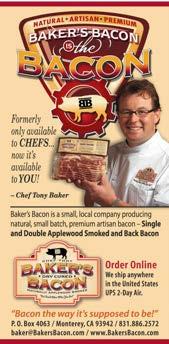
But in just one night—hosting the first Edible Monterey Bay Pop-up Supper Club—the Carmel Valley creation of Brendan Jones and Matthew Zolan easily surpassed the promise of months of frothy press reports and social media frenzy, with a menu that was both mind-bendingly creative and incredibly delicious.
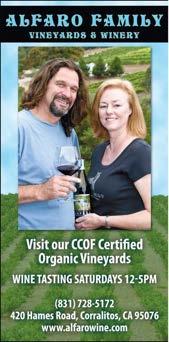
And whereas the food was full of exciting surprises, the service had the assured calm and pleasant lack of surprises of a restaurant that’s been open for months, if not years.
Lokal’s opening had been stalled for some seven months due to permitting and construction delays, but the restaurant was able to christen its kitchen on March 28 for the Supper Club, and in advance sales it quickly sold out. (The restaurant finally opened to the general public on April 30.)

54 edible monterey baySummer 2012
Lokal’s Chef Brendan Jones assembles ceviche.
Unsurprisingly, the excitement of those who were quick enough with their PayPal buttons to obtain tickets created a happy and partylike buzz that lasted throughout the night.
The revelations began at the get-go with a two-tone, two-temperature Hot and Cold Gin Fizz that Jones adapted from a recipe served at Ferran Adria’s avant garde restaurant elBulli in Roses, Spain—which was considered one of the best restaurants in the world until Adria closed it last year and moved on to other projects. (Jones himself apprenticed with elBulli protégé Andoni Luis Aduriz at his Mugaritz in Errenteria, Spain, which itself was ranked third in the world by Restaurant magazine on its 2011 best restaurants list.)
Zolan and Jones’ last venture together was a popular bar in Prague called Osmicka, and they very nearly moved back to the Czech city last year to open a restaurant there before starting Lokal. (Type “Lokal” into the search function on the EMB website to learn more.) So, fittingly, the meal also included a buttery, spicy dark zelnacka, or cabbage soup, but also, fittingly, it was anything but traditionally Czech, as each bowl was topped by a large scoop of Jones’ own golden, seed-flecked mustard ice cream.
Other highlights of the meal included deeply flavorful and meltingly tender short ribs and a salad prepared with Coke Farm artisanal greens, sliced pears, wisps of crisped parsnips and foamed Point Reyes blue cheese.
Jones’ own favorite course of the night was a ceviche of juicy California snapper, kumquats and tangerines served with sliced avocados, frisée and cilantro. The dish’s unexpected kick came from
bright shards of cracklins—made not from pigskin but, rather, crisped mole sauce.
Just as one would expect from a restaurant named Lokal, Czech slang for local—Jones uses local ingredients as much as he can, and just as his father, Michael Jones, does at the Cachagua General Store, where Jones also cooks, Brendan Jones selects organic as much possible. Even the restaurant’s wine list emphasizes local: For the Supper Club, the restaurant paired a Vermentino and Grenache-Syrah blend, both from Chesebro, and a Pinot Noir and a Chardonnay from Chock Rock. —SW
Charlie Hong Kong 1141 Soquel Ave., Santa Cruz 831.426.5664 • www.charliehongkong.com
The Center for Agroecology and Sustainable Food Systems UCSC • 831.459.3240 • www.casfs.ucsc.edu
Lokal 13750 Center St., Carmel Valley • 831.659.5886 www.facebook.com/lokalcarmel

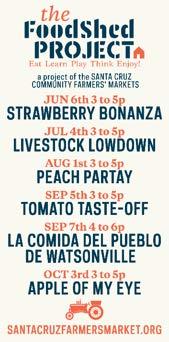
Amber Turpin is a baker, homesteader and food writer located in Ben Lomond. Her most recent endeavor is a coffee and bakeshop on the west side of Santa Cruz called Filling Station.

www.ediblemontereybay.com 55


www.ediblemontereybay.com 57








58 edible monterey baySummer 2012
Monterey Bay Summer Farmers’ Markets

MONTEREY COUNTY
CARMEL
Carmel Farmers’ Market
at The Barnyard (Certified) 3690 The Barnyard 831.728.5060 Tuesdays, 9am–1pm Open May–September www.montereybayfarmers.org
CASTROVILLE
North County Farmers’ Market 11261 Crane St., North County Recreation Center 831.633.3084 Thursdays, 4pm–dusk Open May–October www.ncrpd.org
KING CITY
King City Farmers’ Market
Broadway Street between First and Second streets 831.385.3814
Wednesdays, 4–7pm Open May–October www.kingcitychamber.com
MARINA
Marina Certified Farmers’ Market
215 Reservation Rd., Marina Village Shopping Center 831.384.6961 Sundays, 10am–2pm www.everyonesharvest.org

MONTEREY
Del Monte Farmers’ Market at Del Monte Center (Certified) 1410 Del Monte Center, Whole Foods parking lot 831.728.5060
Sundays, 8am–12pm Open May–October www.montereybayfarmers.org
Monterey Fairgrounds
Certified Farmers’ Market
2004 Fairgrounds Road, Gate 8 831.235.1856
Mondays, 9am–4pm Open year-round
Monterey Farmers’ Market at Monterey Peninsula College (Certified) 980 Fremont Street, parking lot 831.728.5060
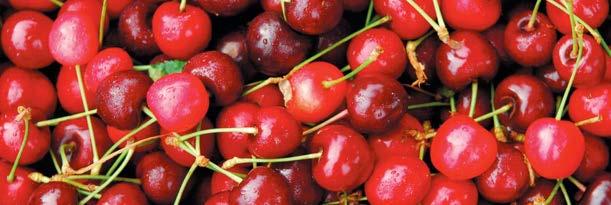
Fridays, 10am–2pm Open year-round, rain or shine www.montereybayfarmers.org
Old Monterey Market Place
Alvarado St. between Del Monte and Pearl 831.655.2607
Tuesdays, 4–7pm (winter), 4–8pm (summer) Open year-round, rain or shine www.oldmonterey.org
PACIFIC GROVE
Pacific Grove Certified Farmers’ Market

Central and Grand avenues, in front of Jewell Park 831.384.6961
Mondays, 4–7pm Open year-round www.everyonesharvest.org
SALINAS
Alisal Certified Farmers’ Market 632 E. Alisal St., Gabby Plaza 831.384.6961
Tuesdays, 9am–5pm Open spring–November www.everyonesharvest.org
Alvarez High School Farmers’ Market
1900 Independent Blvd. at Boronda Road 831.905.1407
Sundays, 8am–2pm Open April–November champfarmermarkets@comcast.net
Natividad Medical Center
Farmers’ Market
1441 Constitution Blvd. 831.384.6961
Wednesdays, 11:30am–3:30pm Open May–November www.everyonesharvest.org
Salinas Old Town Marketplace
Alisal and Main Sts. behind Rabobank 831.905.1407
Saturday, 9am–2pm Open year-round www.oldtownsalinas.com/market.asp
www.ediblemontereybay.com 59
Photo by Carole Topalian
SAND CITY (New!)
The Independent Marketplace 600 Ortiz Ave. 831.394.6000


First Thursday of every month, 4–9pm Open year-round www.sandcityca.com
SOLEDAD
Soledad Farmers’ Market
Front and Encinal Sts. 831.402.6616
Thursdays, 4–8pm Open May–September oldtownsoledad@yahoo.com
SAN BENITO COUNTY
HOLLISTER
Hollister Certified Farmers’ Market Fifth and San Benito Sts. 831.636.8406 Wednesdays, 3–7pm Open May–September www.downtownhollister.org
SANTA CRUZ COUNTY
APTOS
Aptos Farmers’ Market at Cabrillo College (Certified) 6500 Soquel Drive, Cabrillo College, parking structure 831.728.5060 Saturdays, 8am–12pm Open year-round, rain or shine www.montereybayfarmers.org
Seascape Village Certified Farmers’ Market Seascape Village 831.685.3134 Sundays, 11am–2pm Open May–October
CAPITOLA (New!)
Capitola Mall Farmers’ Market 1855 41st Ave., parking lot 831.465.0773
Thursdays 9am–1pm April–November
FELTON
Felton Farmers’ Market
120 Russell Ave. at Hwy. 9, St. John’s Catholic Church 831.454.0566
Tuesdays, 2:30–6:30pm
Open May–October, rain or shine www.santacruzfarmersmarket.org
SANTA CRUZ
Downtown Santa Cruz Farmers’ Market Lincoln and Cedar sts. 831.454.0566
Wednesdays, 1:30–6:30pm
Open year-round, rain or shine www.santacruzfarmersmarket.org
Live Oak/Eastside Farmers’ Market
21511 E. Cliff Drive, East Cliff Shopping Center 831.454.0566
Sundays, 9am–1pm Open year-round, rain or shine www.santacruzfarmersmarket.org
Santa Cruz Saturday Market
137 Dakota Ave., San Lorenzo Park Saturdays, 10am–6pm Open April–November santacruzsaturdaymarket@yahoo.com www.thesantacruzsaturdaymarket.org
60 edible monterey baySummer 2012
UCSC Farm & Garden’s Market Cart
1156 High St. at Bay Street 831.459.3240
Tuesdays and Fridays, 12–6pm Open June–October http://casfs.ucsc.edu
Westside Santa Cruz Market 2801 Mission St. at Western Drive 831.454.0566
Saturdays, 9am–1pm Open year-round, rain or shine www.santacruzfarmersmarket.org
SCOTTS VALLEY
Scotts Valley Farmers’ Market 360 Kings Village Rd., Scotts Valley Community Center 831.454.0566
Saturdays, 9am–1pm Open year-round, rain or shine www.santacruzfarmersmarket.org
WATSONVILLE (New Sunday Market!)
Watsonville Certified Farmers’ Market Peck and Main Sts. 831.234.9511 Fridays, 3–7pm Sundays, noon to 5pm Open year-round, rain or shine
Watsonville Fairgrounds Certified Farmers’ Market 500 Harkins Slough Road, Pajaro Valley High School 831.235.1856
Saturdays and Sundays, 9am–4pm Open year-round
NEARBY COMMUNITIES
GILROY
Downtown Gilroy Farmers’ Market
Seventh Street between Eigleberry and Monterey Sts. 408.710.7147 Sundays, 10am–2pm May-October www.gilroyspiceoflife.com/home.html
HALF MOON BAY
Certified Coastside Farmers’ Markets —Shoreline Station 225 Cabrillo Highway S. 650.726.4895
Saturdays, 9am–1pm Open May–December farmersmarket@coastside.net www.coastsidefarmersmarket.org
PACIFICA
Certified Coastside Farmers’ Markets —Rockaway Beach 200 Rockaway Beach Ave. 650.726.4895
Wednesdays, 2:30–6:30pm Open May–December farmersmarket@coastside.net www.coastsidefarmersmarket.org
PESCADERO
Pescadero Grown! Farmers’ Market 251 Stage Road 650.879.1961 Thursdays, 3-7pm outreach@mypuente.org www.pescaderogrown.org/the-markets
SUMMER FARMERS’ MARKETS BY DAY
Monday: Monterey, Pacific Grove
Tuesday: Carmel, Felton, Monterey, Salinas, Santa Cruz

Wednesday: Hollister, King City, Pacifica, Salinas, Santa Cruz
Thursday: Capitola, Castroville, Pescadero, Sand City, Soledad
Friday: Monterey, Santa Cruz, Watsonville
Saturday: Aptos, Half Moon Bay, Salinas, Santa Cruz, Scotts Valley, Watsonville
Sunday: Aptos, Gilroy, Marina, Monterey, Salinas, Santa Cruz, Watsonville
www.ediblemontereybay.com 61



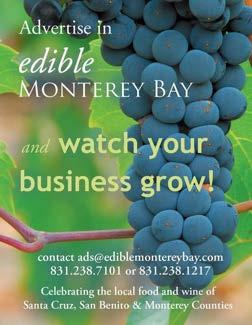
62 edible monterey baySummer 2012
APTOS
Dine Local Guide

Carried Away
7564 Soquel Drive • 831.685.3926 • www.carriedawayfoods.com
A cozy, green-certified take-out or eat-in café, Carried Away has a menu that changes weekly and features primarily organic, locally sourced ingredients. Owner-chef Tom McNary worked for many years at Chez Panisse and his dishes reflect the seasons. Soups, salads, entrees and desserts are all made fresh daily. Thin-crust pizzas available on Tuesday, Friday and Saturday. Open M–F 11am–7pm, Sa 11am–5pm, closed Su.
BIG SUR
The Restaurant at Ventana 48123 Highway 1 • 831.667.4242 • www.ventanainn.com
A peaceful fireplace setting and rustic wood interior give way to a legendary terrace with some of the most amazing views Big Sur has to offer. Chef Truman Jones’ cuisine uses fresh, seasonal and sustainable ingredients sourced from local farms and foragers and reflects his memories of growing up on a farm and his experience working in some of the world’s most-acclaimed restaurants. The restaurant’s menu changes frequently and its wine list is award winning. The Ventana Bistro is available for private events. Open daily for lunch 11:30am–4:30pm, dinner 6–9pm.
BOULDER CREEK
New Leaf Community Market 13159 Highway 9 • 831.338.7211 • www.newleaf.com
The perfect place to stop for made-to-order sandwiches, trail mix and picnic supplies for hikers on their way up to Big Basin or Castle Rock State Parks. All ingredients are fresh and natural, meats are hormone free, produce comes from local growers. Open 9am–9pm every day.
CAPITOLA
Geisha Sushi
200 Monterey Ave. • 831.464.3328
Tucked into a quiet corner of Capitola Village, Chef David Graham has taken sushi to new heights, serving only healthy, sustainable seafood prepared in ways that let the freshness and flavors shine. And with such tempting offerings as salmon-like Arctic char, sweet marinated catfish, delicate Tombo Ahi and buttery walu, you won’t miss the net-caught blue fin or farm-raised eel or sea urchin. Produce used in Geisha’s menu items is sourced from local, organic farms, so you can be assured that when tucking into a meal in the airy pink space, you’re not only helping the ocean’s populations but local farmers as well. Open M–Th and Su11:30am–9:30pm, F–Sa 11:30am–10pm.
New Leaf Community Market
1210 41st Avenue • 831.479.7987 • www.newleaf.com
The New Beet Café at the entrance offers great alternatives to fast food, serving economical daily specials, wraps, pizza and homemade soup and smoothies—with free wi-fi in the dining area. Inside, a full deli has made-to-order sandwiches, healthy takeout salads and entrée items. Open 8am–9pm every day.
Whole Foods Market
1710 41st Avenue • 831.464.2900 • www.wholefoodsmarket.com
An inviting hot food bar offers Asian, Middle Eastern, Mexican and vegan dishes, as well as several kinds of soups made fresh daily. Stop in for picnic supplies, takeout or eat your meal at the sidewalk tables surrounding the store. Open 8am–9pm every day.
CARMEL
Carmel Belle
Doud Craft Studios • Corner of Ocean and San Carlos • 831.624.1600 www.carmelbelle.com

Passionate about sourcing the best local ingredients and meticulous about identifying them on the menu, Carmel Belle is a delicious choice for breakfast or lunch. Almost everything is organic, from the coffee to the meats and cheeses. Faves include a warm slow-cooked Berkshire pork sandwich with red onion-currant chutney on ciabatta, and their house-made mozzarella and asparagus panini. Open daily 8am–5pm.
Earthbound Farm’s Farm Stand Organic Kitchen 7250 Carmel Valley Road • 831.625.6219 • www.ebfarm.com/OurFarmStand Organic is essential at Earthbound Farm. In addition to fresh organic produce, prepared foods and gourmet groceries, the farm stand has a colorful salad bar and a certified organic kitchen. Under the direction of Executive Chef Sarah LaCasse, the kitchen turns out homemade soups and bakery goods daily. Take out or eat at outdoor tables set in the garden. The Farm Stand also hosts cooking demonstrations and other classes and activities. Open M–Sa 8am–6:30pm, Su 9am–6pm.
Hyatt Carmel Highlands—Pacific’s Edge and California Market 120 Highlands Drive • 831.620.1234 • www.highlandsinn.hyatt.com Highlands Inn offers awe-inspiring views, stellar service and food that draws inspiration from local farms and purveyors. Built atop a craggy cliff overlooking Yankee Point and the Pacific, there is no better perch from which to view the setting sun or a breaching whale. Start your experience with a cocktail at the Sunset Lounge, followed by dinner in the glass-walled dining room at Pacific’s Edge (daily 6–9pm), featuring sophisticated California coastal cuisine from Chef Matt Bolton. For breakfast or lunch, dine al fresco on the redwood deck or indoors next to the warmth of a pot-bellied stove at California Market (daily from 7am).
www.ediblemontereybay.com 63
These businesses emphasize local ingredients, and they advertise in Edible Monterey Bay! Please support them with a visit and tell them that we sent you!
Photo at Happy Girl Kitchen by Rob Fisher
Grasing’s
Corner of Sixth and Mission • 831.624.6562 • www.grasings.com
In an ivy-covered Carmel house lit by enormous wrought-iron chandeliers, Chef Kurt Grasing serves ultra-fresh coastal cuisine and upscale bar food for sharing. The dinner menu features chop house favorites, local farm-raised abalone and an eclectic variety of California wines at reasonable prices. Open M–Th for lunch 11am–3pm and dinner 5–9pm, F–Su for brunch 10:30am–3pm and dinner 5–10pm.
Mundaka
San Carlos between Ocean and Seventh • 831.624.7400 www.mundakacarmel.com
A convivial Spanish restaurant and tapas bar hidden away at the back of a Carmel courtyard, Mundaka is named for a coastal town in the Basque country and has a loyal following of locals. A surprisingly authentic kitchen led by Chef Brandon Miller produces organic specialties to share like patatas bravas, croquetas, tiny lamb chops and paella. Open for dinner 5:30pm–late every day.
Rio Grill
101 Crossroads Blvd. • 831.625.5436 • www.riogrill.com
The flavors of the southwest and beyond are highlighted at this locals’ favorite since 1983. The high-energy Rio features the talents of Chef Cy Yontz, who produces creative regional California cuisine using bold spices and an oak-wood fire. The recently renovated bar offers elevated cocktails and an award-winning wine list, catalogued and annotated on iPads, which are handed to guests along with their menus. (Sadly, however, they’re not for taking home.) Rio is open for lunch (11:30am–4:30pm), dinner (4:30–10pm) and Sunday brunch (11:30am—3pm).
CARMEL VALLEY
Bernardus Lodge
415 W. Carmel Valley Road • 831.658.3400 • www.bernardus.com
Chef Cal Stamenov oversees the kitchen for two restaurants at Bernardus Lodge. Elegant Marinus features starched white linens and gleaming crystal in a Tuscan yellow dining room. The menu changes daily and blends top California ingredients with decadent French preparations. Private parties can book dinner in the awardwinning wine cellar or at the chef’s table in the kitchen—where Julia Child and dozens of celebrities have dined. Next to the croquet lawn, Wickets is a more casual option with simpler preparations of exquisite local ingredients and produce from the lodge’s own organic garden. Sit next to the fountain on the sunny patio and try a brick-oven pizza topped with wild mushrooms or duck confit. Marinus: Open for dinner W–Su 6–10pm; Wickets Bistro: Open for breakfast 7–11am, lunch 11:30am–3pm and dinner 6–10pm, with light all-day menu from 2–6pm.
Lokal
13750 Center St. • 831.659.5886 • www.facebook.com/lokalcarmel
Chef Brendan Jones and business partner Matthew Zolan are aiming for the style to run high and prices low at their recently opened restaurant in Carmel Valley Village. Ingredients are sourced locally and the inspiration from Spain, Japan and other places that have also inflected the dishes that Jones has developed for his dad’s local icon, Cachagua General Store. Look for inventive choices such as steamed buns with pork belly, burnt Caesar salad with asiago cheese and Spanish-style aged steak with local chanterelles. The laid-back but elegant interior features a 28-foot reclaimed fence wood bar where local wines and beer will be poured; an adjacent beer garden is in the works. Open for dinner Thu–Sa, 5:30; breakfast and lunch M-F, 7–2:30.
FELTON
New Leaf Community Market
6240 Highway 9 • 831.335.7322 • www.newleaf.com
New Leaf offers the best fresh food made and grown here on the Central Coast. Made-to-order sandwiches, salads and hot foods are all natural. No nitrates, hormones, antibiotics or artificial ingredients. Open 9am–9pm every day.
FREEDOM
Freedom Meat Lockers and Sausage Company
160 Hi Grade Lane, Freedom • 831.724.4355 • www.freedommeatlockers.com
Worth searching out for their natural home smoked meats and sausages, this oldfashioned butcher shop also has a take-out deli with hot and cold sandwiches, side salads and homemade apple or berry pies from nearby Gizdich Ranch. Favorites include marinated tri-tip, skirt steak and pulled pork sandwiches. Gift packs and custom smoking of your fish or game is also available. Open Tu-Sa 9am-6pm, deli hours 10am-5pm.
HALF MOON BAY
New Leaf Community Market
150 San Mateo Road • 650.726.3110 • www.newleaf.com
Green plate specials offer healthy natural lunches for $5 daily and full dinners for $9.99. Lunches like Diestel turkey wraps and tri-tip sandwiches change daily. Hot dinner specials include classics like meatloaf with mashed potatoes and Smart chicken parmesan. Open 8am–9pm every day.
MARINA
Wild Thyme Deli & Café
445 Reservation Rd. • (831) 884-2414 • www.wildthymedeli.com Chef Terry Teplitzky offers a dizzying array of influences on the menu at his quaint and cozy café. A tantalizing slate of salads includes everything from traditional tuna and Greek to Asian cabbage and Chinese noodle. Also on offer is some of the best mango-chutney-bursting curry chicken in the region. East Coast classics, such as massive submarines, housemade corned beef and pastrami, as well as great Jerseystyle cheesesteak might smack of fast food, but everything is prepared with organic, locally sourced ingredients. Open M–Sa 10am–5:30pm.
MONTEREY
Monterey Bay Aquarium Café and Restaurant
886 Cannery Row • 831.648.4870 • www.montereybayaquarium.org Sweeping views of the Monterey Bay are the focal point of the upscale restaurant inside the Aquarium. Executive Chef Jeff Rogers prepares sustainable seafood approved under the Aquarium’s Seafood Watch program. Preparations range from New England clam chowder to Thai-style mussels, with child-friendly options as well. Complimentary binoculars offered for viewing sea life in the bay. Open 11am–5pm. A self-service café is open 10am–5pm. Aquarium admission required.
Montrio Bistro 414 Calle Principal • 831.648.8880 • www.montrio.com This sophisticated bistro located in a historic brick firehouse in Old Monterey lures with a creative, seasonal menu created by Chef Tony Baker, a British expat with an eclectic style. Montrio’s faithful start early, enjoying the small-bite menu during happy hour at the lively bar—with a spirited, innovative cocktail program designed by mixologist Anthony Vitacca. Dinner begins at 5pm nightly, and patrons often linger well into the night. Montrio embraces sustainability, purchasing from local farms and vendors, following Seafood Watch guidelines and employing a triple-filtered tap water system.
Parker-Lusseau Pastries and Café 731 Munras Ave., Monterey • 831.643.0300 539 Hartnell St., Monterey • 831.641.9188 Ryan Ranch, 40 Ragsdale Dr. Suite 100, Monterey • 831.655.3030 www.parker-lusseaupastries.com Gorgeous French pastries, cakes and tarts are lovingly hand-crafted by the young couple that owns this gem of a bakery, Ann Parker and Yann Lusseau. If you want something hot from the oven, go to the Munras Avenue location where everything is baked. The Hartnell shop is a rustic café in an historic adobe in Old Monterey. Croissants, quiche, eclairs, cream puffs and chocolates are all on the menu, along with a selection of sandwiches, salads and soup. Also offering custom cakes for weddings and other special occasions. Munras store open W-Sa 7am-4:30pm. Hartnell store open M-F 7am-5:30pm and Sa 7:30am-4pm. Ryan Ranch store open M-F 7:30am-3pm.
Stone Creek Kitchen
465 Canyon del Rey Boulevard • 831.393.1042 • www.stonecreekkitchen.com
A glass-walled kitchen in the middle of a spacious cookware shop turns out imaginative Mediterranean deli treats and sweets to take away or eat under the market umbrellas outside. Petite baguette sandwiches—like grilled chicken, artichoke hearts and Boursin cheese—are little works of art. Don’t miss the pistachio/cherry chocolate bark or the paella Fridays. Open M–F 10am–7pm, Sa 10am–4pm, closed Su except during November and December.
Tarpy’s Roadhouse
2999 Monterey Salinas Highway • 831.647.1444 • www.tarpys.com
This romantic, historic stone roadhouse—built in 1917 and set on five, beautifully landscaped acres—features dining in several semi-private rooms and on a cozy garden patio. Chef Michael Kimmel uses a wood-burning grill to prepare American country cuisine, including wild game, prime steaks and local seafood, daily from 4:30pm. A popular site for Sunday brunch (11:30am–3pm) and local weekday “power lunches” (11:30am–4:30pm), Tarpy’s also attracts a spirited bar crowd and is a popular spot for large banquets, meetings and celebrations.
64 edible monterey baySummer 2012
Whole Foods Market
800 Del Monte Center
• 831.333.1600 • www.wholefoodsmarket.com
This busy market at the Del Monte Center has everything needed for a picnic at the beach. Fresh to-go sandwiches, salads and dinner entrées all made with natural or organic ingredients can be eaten at the café tables outside or taken with you. Open 8am–9pm every day.
The Wild Plum Café, Bistro and Bakery 731 Munras Avenue • 831.646.3109 • www.thewildplumcafe.com Tucked away in downtown Monterey, the Wild Plum is a local favorite for its fresh breakfast pastries and takeout entrées, like lasagna, sesame chicken and sustainable seafood. Everything is homemade on the premises and owner Pamela Burns haunts three farmers’ markets each week for the most delicious seasonal, local produce. Open for breakfast, lunch and dinner Tu–Sa 7:30am–8:30pm, Su–M for breakfast and lunch 7:30am–5:30pm.
PACIFIC GROVE
Happy Girl Kitchen Co.
173 Central Avenue • 831.373.4475 • www.happygirlkitchen.com
The menu changes daily at Happy Girl’s airy and bright Pacific Grove café, but the food is always delicious, organic and reasonably priced: The sandwich of the day is $5.50 and a bowl of the soup of the day is $4.50. To drink, you’ll find kombucha on tap and Blue Bottle Coffee brewed fresh. Homemade baked goods include a daily scone, cookies and turnovers. When it’s time to go, take home some famed Happy Girl preserves or another local artisan food product from the café’s wide selection. Open daily 8am–3pm.
il vecchio
110 Central Avenue • 831.324.4282 • www.ilvecchiorestaurant.com Fresh, authentic Italian pastas, entreés and desserts at affordable prices draw crowds nightly and create a festive atmosphere at Pacific Grove’s newest hotspot. The warm, rustic interior was created using reclaimed and salvaged materials by owner Carl Alasko’s daughter Ariele—a Brooklyn-based designer. Many of il vecchio’s recipes originated at Rome’s renowned Maccheroni trattoria. Open Tu–Su 5–9:30pm.
Passionfish
701 Lighthouse Avenue • 831.655.3311• www.passionfish.net
If you’re looking for a restaurant with playful, spectacular food and a scrupulous commitment to sustainability, Passionfish is hard to rival. The elegant dining room is celebratory yet relaxed, and the award-winning wine list features many sustainable names and is priced at retail. Chef Ted Walter’s menu is ever-changing with the seasons, but always includes organic local produce, inventive slow-cooked meats and an array of sustainable seafood choices. The restaurant was the first to be certified by the Monterey County Green Business Program. Open every day from 5pm.
Point Pinos Grill
79 Asilomar Boulevard • 831.648.5774 • www.ptpinosgrill.com
With an unbeatable location on the golf course near Point Pinos Lighthouse, this clubhouse restaurant also has unbeatable food now that Chef Dory Ford and his team from Aqua Terra Culinary have taken over. Breakfast and lunch classics get his sustainable, gourmet spin, like buttermilk blueberry pancakes made from scratch, heirloom tomato tart, or arugula, fig and prosciutto salad. Happy hour prices and appetizer supper specials start at 3pm. Open daily from dawn to dusk.
MOSS LANDING
The Haute Enchilada

7902 Moss Landing Road • 831.633.5843 • www.hauteenchilada.com
A fanciful world where Frida Kahlo and Andy Warhol prints hang side by side on fiesta-colored walls and a mermaid fountain gurgles in the courtyard, The Haute Enchilada serves Spanish, Mexican and Peruvian dishes with an emphasis on fresh seafood and local wines. Try salmon tacos with fruit salsa for lunch or chilaquiles for a hearty brunch. Open M-Tu 10am-4pm, W-Su 10am-9pm.
Pèppoli
PEBBLE BEACH
The Inn at Spanish Bay, 2700 17 Mile Drive • 831.647.7433 • www.pebblebeach.com/dining/the-inn-at-spanish-bay/peppoli-at-pebble-beach
The only restaurant in the U.S. associated with the Antinori Italian wine company, Pèppoli specializes in cuisine that goes well with its renowned Super Tuscan blends. There are homemade pastas and charcuterie and an enormous brick rotisserie in the dining room where prime rib sizzles on weekends, along with great sunsets overlooking Spanish Bay and Asilomar. Open daily 6-10:30pm.
Roy’s
The Inn at Spanish Bay, 2700 17 Mile Drive • 831.647.7423 • www.pebblebeach.com/dining/the-inn-at-spanish-bay/roys-at-pebble-beach
With sweeping views over the wild Spanish Bay Golf Links to the coast, the Honolulu-based Roy´s features Hawaiian fusion fare. Chef Pablo Mellin combines Asian tastes and European technique to create exotic entrées like Crab Crusted Halibut or Thai Curry Glazed Rack of Lamb. Appetizers include 10 types of sushi rolls as well as nigiri sushi and sashimi. Open daily for breakfast 6:30-11am and for lunch and dinner 11:30am-10pm.
Stillwater Bar & Grill
The Lodge, 2700 17 Mile Drive • 831.625.8524 • www.pebblebeach.com/dining/the-lodge-at-pebble-beach/stillwater-bar-and-grill A muted maritime theme with wavy designs and gleaming wooden decks sets off Stillwater ´s magnificent views of Carmel Bay and the 18th hole at Pebble Beach Golf Links. Seafood dominates the menu. A live tank provides Monterey Bay Red Abalone and Maine Lobster. Splurge on a shellfish platter of oysters, crab and prawns or try Pacific Black Cod with organic local vegetables. Open daily for breakfast, lunch and dinner M-Th 8am-9pm, F 8am-10pm, Sa 7am-10pm, Su 7am-9pm.
SALINAS
The Bakery Station
202 Monterey St. • 831.783.1140 • www.thebakerystation.com
In a repurposed gas station, bakers Ana Melissa Garcia and Erika Olivarez fire up a traditional stone hearth oven to produce crusty Old World breads, scones and muffins. The Bakery Station is also a popular lunch stop, turning out sandwiches like the Road Hog—with pulled pork and whiskey sauce on a brioche roll.Open MF 6am-4pm, Sa 7am-2pm, closed Su.
Growers Pub
227 Monterey Street • 831.754.1488 • www.growerspub.com Decorated with sepia photos of field hands and packing houses, Growers Pub is really a restaurant where even your great-grandfather might feel right at home. A classic menu, built around its famous prime rib and steaks, also features salmon, pasta and salads made with local greens. Don’t miss the 1940s vintage bar with its once scandalous bare-breasted Indian maiden. Open M–F 11am–9pm, Sa 5–9pm, closed Su.
www.ediblemontereybay.com 65
Charlie Hong Kong
SANTA CRUZ
1141 Soquel Avenue • 831.426.5664 • www.charliehongkong.com
Charlie Hong Kong has been providing the Santa Cruz community with healthy, fresh, high-quality food since 1998. The restaurant’s fusion of Southeast Asian influences and the Central Coast’s local organic produce is what has made it a neighborhood favorite. Its slogan is “love your body, eat organic,” and its cuisine is proof that fast food can be good for you. Open daily from 11am–11pm.
Companion Bakeshop
2341 Mission Street • 831.252.2253 • www.companionbakeshop.com
After five years on the farmers’ market circuit, Companion has opened its own bakery/café. It has a brick oven, where organic sourdough bread is baked throughout the day, and a long communal table for sharing a coffee with your neighbors. Eight kinds of sourdough bread and seasonal pastries are made with local, organic ingredients. Open Tu–F 7am–1pm, Sa–Su 8am–2pm, closed M.
Gabriella Café
910 Cedar Street • 831.457.1677 • www.gabriellacafe.com
One of the city’s most charming dining spots, Gabriella Café serves a California-Italian menu starring organic produce from local growers and the nearby farmers’ market, as well as humanely raised meat and sustainable seafood. There is a candlelit patio and a cozy dining room that showcases the work of local artists. Open for lunch M–F 11:30am–2pm, dinner every day 5:30–9pm, brunch Sa–Su 11:30am–2pm.
La Posta
538 Seabright Ave. • 831.457.2782 • www.lapostarestaurant.com
A cozy neighborhood bistro not far from the Santa Cruz yacht harbor, La Posta Chef Katherine Stern serves northern Italian cuisine using local ingredients—some foraged and some grown on nearby organic farms. Eggs come from chickens kept in the restaurant´s backyard. Charcuterie is house-cured and the rest of the menu reflects whatever produce is freshest right now. Open Tu-Th 5-9pm, F-Sa 5-9:30pm, Su 5-8pm, closed M.
Le Cigare Volant 328 Ingalls St. • 831.425.6771 • www.bonnydoonvineyard.com
Chef Ryan Shelton serves some of the region´s most innovative cuisine in a warm dining room, with a wood-fired pizza oven in full view and a bar made from barrel slats. Taking full advantage of sustainably grown, organic local produce, meats and cheeses, the menu changes with the seasons. Small plates like smoked fingerling potatoes, flat bread pizza and pork shoulder steamed buns are always available in the wine tasting room. Open Th-F 5:30-9pm, Sa-Su 12-3pm and 5:30-9pm; special Community Table dinners Wednesdays with one seating at 6:30pm and a price of $35 for three courses including a glass of wine, often presided by Randall Grahm himself. Closed M-Tu.
New Leaf Community Market
1134 Pacific Avenue • 831.425.1793 • www.newleaf.com
New Leaf’s headquarters in an old bank building on Pacific Avenue is a worthwhile stop for all foodies. Crowded with gourmet natural foods, it also has a deli with sandwiches, salads and hot entrées. A dining area out front is great for people watching and listening to street musicians. Open 9am–9pm every day.
New Leaf Community Market
1101 Fair Avenue • 831.426.1306 • www.newleaf.com
The Westside New Leaf has a large deli counter and coffee bar, with a big selection of sandwiches, salads, bakery items, soups and other hot foods. You can eat at an instore counter or at tables outside. There is a community classroom here for frequent cooking classes. Open 8am–10pm every day.
The Penny Ice Creamery
913 Cedar Street • 831.204.2523 • www.thepennyicecreamery.com
Lines out the front door of its converted Spanish bungalow are evidence of Penny’s popularity. All ice cream, including bases, is made from scratch on the premises using local organic ingredients when possible. Flavors change seasonally, but two favorites are bourbon bacon chocolate and strawberry pink peppercorn. Open Su–W noon–9pm, Th–Sa noon–11pm.
The Picnic Basket
125 Beach Street • 831.427.9946 • www.facebook.com/thepicnicbasketsc
Across the street from the main beach, owners of the Penny Ice Creamery have opened an alternative to boardwalk fast food. Sandwiches, organic salads, coffee and beer, all from local food artisans, and of course Penny’s popular ice cream are all on offer to eat in or eat outside with your feet in the sand. Open 7am–midnight every day.
Ristorante Avanti
1711 Mission Street • 831.427.0135 • www.ristoranteavanti.com
A popular Mediterranean-style neighborhood bistro with a warm wood-paneled dining room. Food is prepared naturally and simply using local organic produce, wholesome oils and real Italian cheeses and meats. Avanti’s reputation is deeply engrained in the sustainable farming practices of the area. Hidden in a strip mall, this is a real gem. Open for lunch M–F 11:30am–2pm, for dinner Su–Th 5–9pm, F–Sa 5–9:30pm.
River Café
415 River Street, Suite K • 831.420.1280 • www.rivercafesantacruz.com
A popular spot for breakfast and lunch at the Old Sash Mill, the River Café now serves dinner on Thursday and Friday nights. All meals are made with seasonal, local and organic ingredients, prepared with a Mediterranean flair. Homemade granola and quality panini. Dining inside or on their redwood deck. Open M–W 6:30am–6pm, Th–F 6:30am–10pm, Sa 6:30am–6pm, Su brunch 10am–3pm. Come by and visit their new organic produce and flower stall on Tuesdays 11:30am-4pm.
Soif Restaurant and Wine Bar
105 Walnut Ave. • 831.423.2020 • www.soifwine.com This wine-centric downtown restaurant is housed in a hip, loft-style building and includes a wine shop next door. Food reflects Chef Santos Majano´s love for Mediterranean flavors, and each dish is paired with a wine suggestion from the vast wine list. Monday evenings there is a raw oyster bar with live jazz. Tuesday is tapas night. Restaurant and wine bar open Su-Th 5-9pm, F-Sa 5-10pm.
Verve 816 41st Avenue • 831.475.7776 • www.vervecoffeeroasters.com 1540 Pacific Ave. • 831.600.7784 104 Bronson St. Suite 19 • 831.464.8141
Award-winning baristas and carefully selected coffee beans, hand-roasted on the premises, make Verve a must-stop destination for coffee connoisseurs throughout the Monterey Bay area. A short walk for the surfers at Pleasure Point, the café is bright and modern and always smells great. Free cuppings offered on Fridays. Open M–Th 6am–7:30pm, F–Sa 7am–8:30pm, Su 7am–7:30pm.
Vivas Organic Mexican Restaurant 1201 Soquel Avenue • 831.425.8482 • www.vivasorganic.com
A splashing fountain suggests an old Mexican patio but the food is a modern, organic and delicious take on south-of-the-border classics like tacos, tostadas, quesadillas and burritos. All meats and vegetables are organic. Local juices, organic white and brown rice are available, as well as vegan options. Open M–F 10am–10pm, Sa–Su 9am–10pm.
Whole Foods Market 911 Soquel Avenue • 831.426.9901 • www.wholefoodsmarket.com
Too busy to cook? Head for the prepared foods section of Whole Foods Market, where everything is natural or organic and as much as possible is locally grown. There are ethnic specialties, salads, soups, fresh pizza and a coffee bar, with tables out in front of the market. Open 8am–9pm every day.
WATSONVILLE
Gizdich Ranch
55 Peckham Rd. • 831.722.1056 • www.gizdich-ranch.com
Visitors from great distances love this third-generation, family-run farm business that popularized the “pik-yor-sef” experience just east of Watsonville’s Interlaken neighborhood. Tour the farm, pick fresh apples or berries or watch the action inside the juice-pressing barn. No one leaves hungry if they spend time at the bakerydeli that pleases with its fresh pies, shortcakes and pastries, along with hearty sandwiches and box lunches. This family friendly experience is also a treat for kids, who will enjoy the wide-open spaces and the homemade popsicles and slushes. Open daily, 8am–5pm.
66 edible monterey baySummer 2012
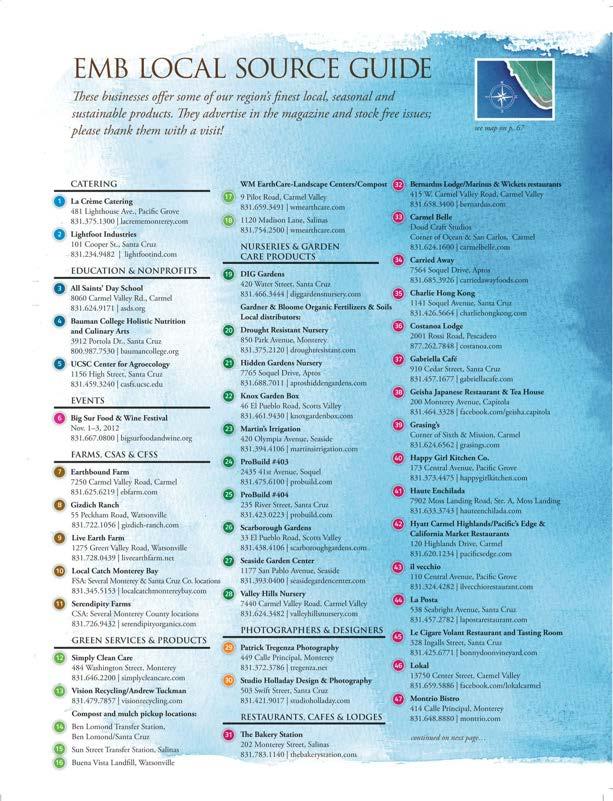
www.ediblemontereybay.com 67

68 edible monterey baySummer 2012
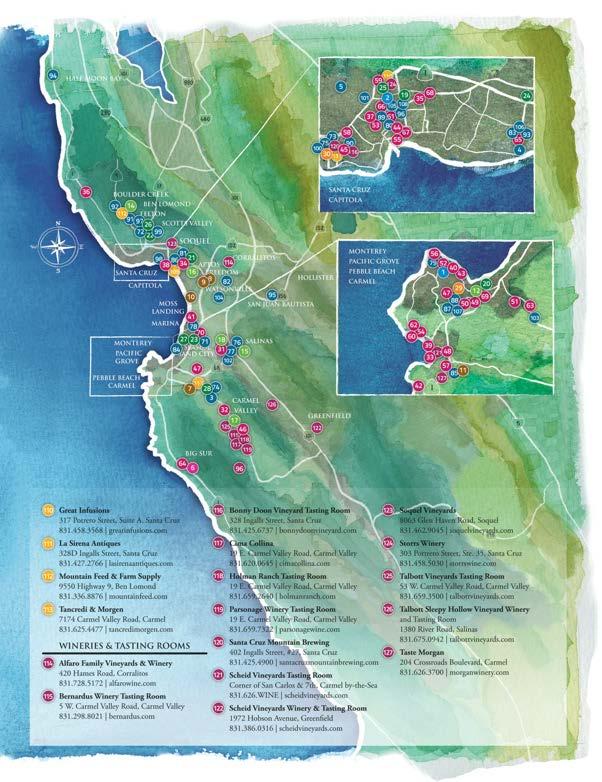
www.ediblemontereybay.com 69
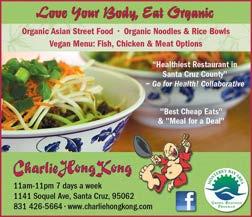
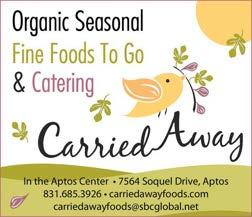
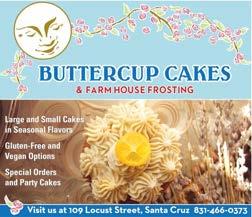


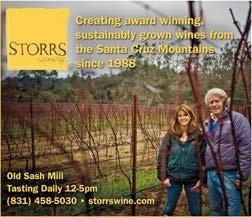
70 edible monterey baySummer 2012
Local Libations
Ooga Mooga!
The Tiki revival is in full tilt at Hula’s
by Rob Fisher
Don’s Beachcomber Café. Gantt was a restaurateur but also a showman. Much of the lore around him is colorful and unverifiable.
Gantt soon moved his bar across the street and renamed it Don the Beachcomber. He also legally changed his name to Donn Beach. His watering hole gained a following with the likes of Charlie Chaplin, Clark Gable, Buster Keaton and Joan Crawford, who went not only for the whimsical faux Polynesian décor and the Chinese food made to suffice for South Pacific cuisine, but also for its legendary rum drinks. Whether Beach’s cocktails were his own invention— as he always claimed—or that of his Filipino bartenders, they were creative and popular. Great care was put into each recipe, and all were kept a closely guarded secret. It is said that Beach would mix his ingredients out of sight and put them in labeled bottles for the bartenders to use, to guard against the prying eyes of curious employees and patrons.
New York Times obituary credited Beach with inventing more than 80 different cocktails. Some of the drinks attributed to him include the Vicious Virgin, Missionary’s Downfall, Shark’s Tooth, Dr. Funk, Zombie Punch and, Sinatra’s favorite, Navy Grog. Beach’s 1934 recipe for Zombie Punch, as published in The PDT Cocktail Book by Jim Meehan, has nine ingredients, including three kinds of rum and an eighth of a teaspoon of absinthe. It was a strong drink, and according to legend, one night loyal customer Howard Hughes struck and killed a man while driving home from the Beachcomber after indulging in at least one too many Zombies.
In 1936, a one-legged San Francisco native named Victor Bergeron transformed his own bar in Oakland, then called Hinky Dink’s, into Trader Vic’s. Bergeron invented the Mai Tai and was the first to bring wooden Polynesian statues, called tikis, into his restaurant.


These wooden statues gave Tiki culture its name, and the trend really began to take off across the country after World War II, when men came home from the Pacific, and
the country was happy to find a fantasy escape from the escalating Cold War. Beach lost his rights to his restaurants in a divorce, but his ex-wife expanded the franchise to more than a dozen locations. (Meanwhile, Beach was not barred from doing business in Hawaii, as it was only a U.S. territory, and
The Blue Hawaiian
1 1/2 ounces light rum (Hula’s uses Cruzan)



1 ounce Cream of Coconut
1 1/2 ounces pineapple juice
1 ounce lime juice
1 ounce blue Curaçao
Maraschino cherries
Paper umbrellas (for the full effect)
Fill a Hurricane glass with ice. Pour all ingredients except for the blue Curaçao into a shaker and shake well. Pour back into the glass and float the blue Curaçao over the top. Garnish with a cherry and, if desired, a paper umbrella.
www.ediblemontereybay.com 71
Collection of historic Tiki mugs at Hula’s in Monterey.
Photo by Rob Fisher
not yet a state, so he opened a new Don the Beachcomber in 1946 in then-sleepy Waikiki, where he remained until he died in 1989.)
Over the years, Tiki culture has ebbed and flowed. Trader Joe’s is now much better known than Trader Vic’s, and most people who have had a Mai Tai in Hawaii would have a hard time believing that the name really means “the very best” in Tahitian. For a while, it seemed the adventure and the art had been lost.
Happily, these days are seeing a major Tiki revival. Serious mixologists who had diligently brought back many of the classic preProhibition cocktails are now turning their attention to post-Prohibition Tiki drinks, embracing the challenge of reproducing the original complex recipes while keeping them fresh and fun—and rarely neglecting the use of flamboyant mugs and pieces of fruit when at all possible.
We are lucky to have two of the West Coast’s most respected Tiki watering holes right here in our own backyard: Hula’s in Santa Cruz and in Monterey.
Brothers Craig and Chris Delaney created Hula’s after years of living in Hawaii.
The Delaneys decorated their original Monterey restaurant with surfboards, ukuleles, carved statues and many Hawaiian Island garage-sale gems, like a black velvet painting of surfing legend Duke Kahanamoku. The food is island fusion prepared with a commitment to using exclusively sustainable fish and 18 savory and delicious housemade sauces. (The Kingston Curry is addictive.)
Eventually, the brothers opened a second restaurant in downtown Santa Cruz, and even if you’ve not had the chance to drop in, you’ve probably seen their roving billboard— a vintage truck with a sign on the side, cleverly moved around town to spread the word.

Nikki Uchida, bar manager of Hula’s Monterey, says that all of the drinks are created and refined by collaboration. The bartenders like to start with the recipe of a classic Tiki drink, and “tweak it until it tastes like it’s ours.”

True to the spirit of the original Tiki bars, Hula’s was very, very reluctant to share a single one of its recipes, but after some cajoling, they decided to give us their recipe for the Blue Hawaiian. Unlike most of the drinks at Hula’s, this one is not difficult to try at
home. “It’s not going to take 25 ingredients and 100 dollars,” says Uchida.
When one of the visually striking Blue Hawaiians is ordered and goes out from the bar, suddenly 10 more get ordered by patrons who see it and want one, too, Uchida says. It is a sweet drink that is popular with people who don’t normally like sweet drinks because the flavors are all natural, and there is enough sour to balance the sweetness. “It’s delicious and beautiful!” she says.
We have diligently tested this recipe in our own kitchen and made a lot of people happy in the process. But if you don’t have time to make this one yourself, you can always go to Hula’s.
Hula’s Monterey: 622 Lighthouse Ave. 831.655.4852 • www.hulastiki.com
Hula’s Santa Cruz: 221 Cathcart St. 831.426.4852 • www.hulastiki.com
Tiki
72 edible monterey baySummer 2012
mavens: Ian McRae of Hula’s Santa Cruz and Nikki Uchida of Hula’s Monterey.
Photo at left, Ted Holladay; photo at right, Rob Fisher



















 By Renee Brincks
By Renee Brincks









 By Cameron Cox
By Cameron Cox






































































 By Pete
Photography by
By Pete
Photography by
















 By Amber Turpin and Sarah Wood
By Amber Turpin and Sarah Wood
















































